K EENELAND
celebrating bluegrass traditions



Are you at risk of developing cardiovascular disease? Find out with an advanced heart screening at Saint Joseph Hospital. Our new $75 preventive heart health screening can help give you peace of mind by identifying risk factors you may have.
Our preventive heart screening includes:
Myocardial Strain Profle or Ejection Fraction Measurement: Evaluates left ventricle function.
Electrocardiogram (ECG/EKG): Records heart’s electrical activity.
Abdominal Aorta Screening: Measures lower aorta width.
Carotid Ultrasound Screening:
Assesses carotid artery for blockages and measures blood fow.
Ankle-Brachial Index (ABI): Compares ankle and arm blood pressure to detect leg artery issues.
Schedule your appointment today by visiting CHISaintJosephHealth.org/Heart-Check or give us a call at 859.313.2698.


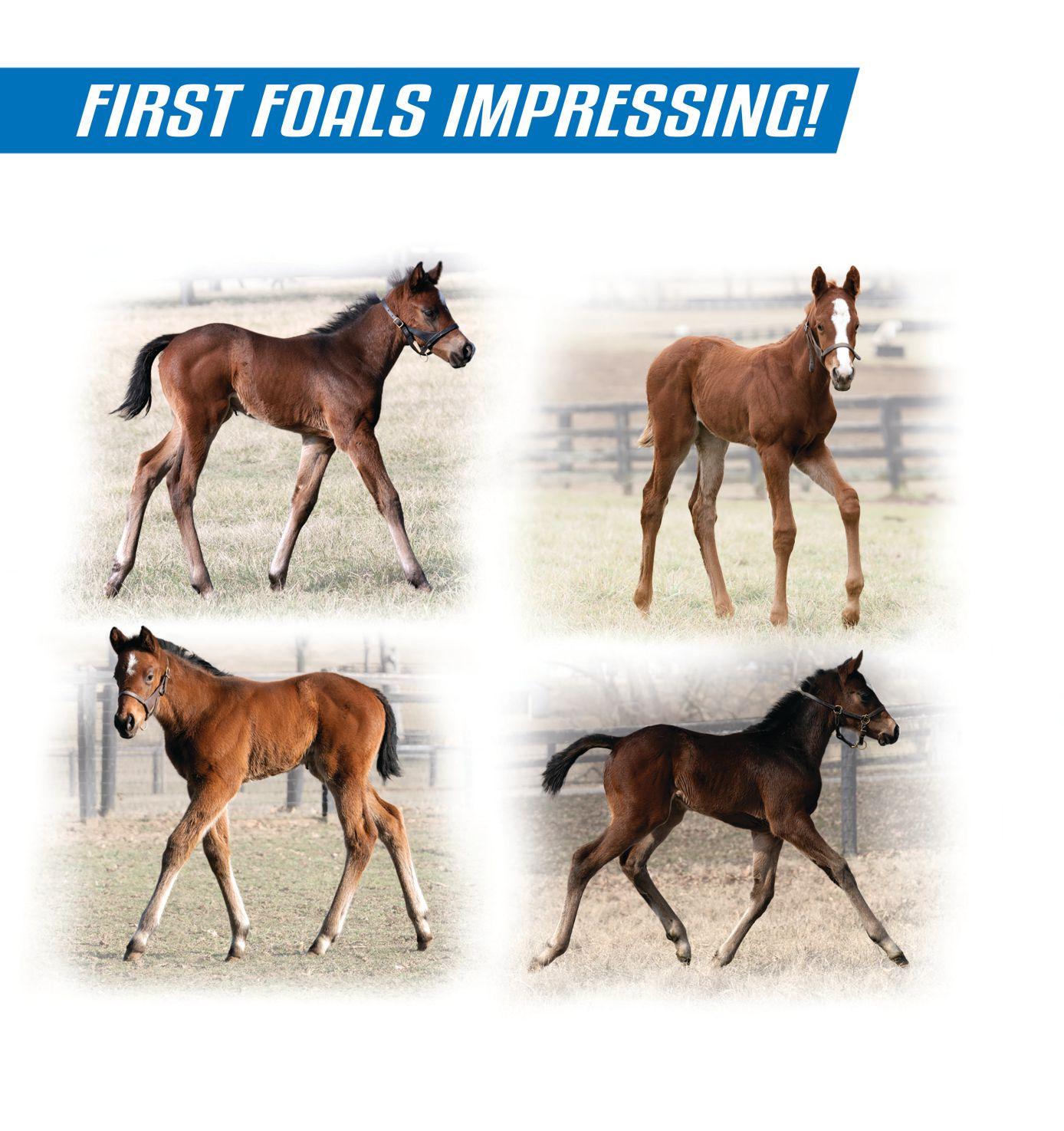 Colt x Laurel Canyon. Bred by I-Hope Farms, LLC
Filly x Court Dancer. Bred by Sun Valley Farm
Filly x My Fast One. Bred by MMM Stables
Filly x Honest Outlaw. Bred by Wolverton Mountain Farm & Richard Nicolai
Colt x Laurel Canyon. Bred by I-Hope Farms, LLC
Filly x Court Dancer. Bred by Sun Valley Farm
Filly x My Fast One. Bred by MMM Stables
Filly x Honest Outlaw. Bred by Wolverton Mountain Farm & Richard Nicolai
Filly x Lockstep.
Bred by West Bloodstock & Amaroo Farm

Filly x Second Coming. Bred by G Watts Humphrey Jr
❝To this day, I’ve never had a horse faster or more talented than Jack Christopher, really not even close❞
CHAD BROWN, also trainer of top sires GOOD MAGIC and PRACTICAL JOKE











While away warm Kentucky nights at Lost Palm, our tropical, pineapple-scented rooftop paradise. Inspired by 1960s South Florida — Lexington’s Southern Sister in Horses — Lost Palm’s indoor outdoor drinking parlor features a famboyant tiki cocktail program and light bites.
RESERVATIONS AVAILABLE ON RESY OR RING US AT (859) 785-3906
Granddam is The Manchester’s expansive Appalachian dining hall, serving up nostalgic regional cuisine with unexpected twists and a focus on local farms and purveyors. We’ve got wood-fire cooking, tableside preparations, and a spirited cocktail program inspired by the farms of the Bluegrass. Come say hey, at your leisure.
RESERVATIONS AVAILABLE ON RESY OR RING US AT (859) 785-3905






100%
Shop in-store or online at KeenelandShop.com a
is BPA-free Microwave, freezer and dishwasher safe.
Safe for hot & cold $25
way





Natural white archival paper with a textured fnish. Paper prints have an additional 1 inch white border Frame not included $49
Dimensions: 13” x 18”
$1 8
$18




4 way stretch, moisture-wicking
Style: White/Green $110
B. STEPHANIE HILEN ART ANYONE’S RACE 11X14 PRINT A. KEENELAND 22OZ. SILICONE TUMBLER WITH LID unbreakable food-grade silicone that C. HORN LEGEND KEENELAND MEN’S HORSE POLO E. KEENELAND GARDEN FLAG D. HORN LEGEND KEENELAND WOMEN’S QUARTER ZIP 4 stretch, moisture-wicking Style: Green/White $125




Show your Keeneland pride in the new Keeneland 1936 Stacked Text Tee.
$28


the historic culture of this classic ceramic fask is but with a nod to its
Designed to reference the historic culture of distilling spirits, this classic ceramic fask is newly designed but with a nod to its predecessors.
$125
resistant archival
Heavy Archival Matte Paper. Matte fnish with a smooth surface. Faderesistant with 90+ years archival rating.
$32
Choose from the various Keeneland & Kentucky designs. Handmade in Kentucky.
$35



espresso
Ready-to-pour espresso martini made with Vodka & Vanilla Liqueur.
$30
Elevate cocktail hour with the Keeneland Martini Glass.. $15
B. DIXIE RESERVE CO. COMMONWEALTH PRINT A. KEENELAND 1936 STACKED TEXT TEE C. ST. ELMO ESPRESSO MARTINI MIX KEENELAND D. MISC. GOODS CO. CERAMIC FLASK F. KEENELAND MARTINI GLASS


















Mandy Pope helps preserve top American bloodlines through her high-end purchases of celebrated fillies and mares.



The storied Blue Grass Stakes, which has produced Kentucky Derby winners, innumerable champions, and breed-shaping stallions, celebrates its 100th running.
Northern Dancer won the 1964 Blue Grass Stakes en route to a Kentucky Derby victory and an eventual stallion career that transformed the Keeneland sales and the international bloodstock market.
With its bustling Main Street, strong business base, and numerous tourist attractions, Georgetown is enjoying an economic boom.
Lexington offers an abundance of places to enjoy the natural world and outdoor educational opportunities.
Family-owned Limewater Bistro + Bar has found a perfect fit in Frankfort’s venerable GlenWillis House.

The Paddock, Keeneland
Oil on canvas, 30 x 24, by Peter Howell
Introduced to the world of racing at age 8, Peter Howell spent his school holidays in Newmarket, England. He chose to pursue a racing career instead of art school, which actually helped theWelshman when he later made the switch in the 1960s to full-time painting. He lives in the quiet countryside of Devon when he is not traveling to racetracks and stables all over the world.
Family operated for over fifty years
The McLean family has owned and operated their full service, 1,000 acre Crestwood Farm since 1970.
Since then, Crestwood has bred and/or raised multiple Hall-of-Fame inductees, Champions and 300+ stakes horses.














32
20 PRESIDENT’S MESSAGE
22 CONTRIBUTORS
24 NEWS / 28 CONNECTIONS
32 SPOTLIGHT ON
Maple & J jewelry is a tribute to founder Cara Hochhalter’s racing heritage.
by Liane Crossley138
The Marksbury Family Branch of the Lexington Public Library turns the page to innovation and dazzling design as it replaces the former Village Branch facility.
by William Bowden












celebrating bluegrass traditions
The offcial magazine of Keeneland Association, Inc. published by Blood-Horse LLC 821 Corporate Dr., Lexington, KY 40503 (859) 278-2361/FAX (859) 276-4450
KeenelandMagazine.com
BloodHorse.com
Editor: Jacqueline Duke
Artists: Catherine Nichols (Art Director), PhilipTruman
Copy Editor: Rena Baer
Visuals Director: Anne M. Eberhardt
Creative Services: Jennifer Singleton (Director), Forrest Begley
Account Executive: Amanda Ramey Masters
Sales Support: Catherine Johnston
CORPORATE OPERATIONS
Circulation Accounting Manager: Lauren Glover
General Manager: Scott Carling
PUBLISHED BY Blood-Horse LLC
BOARD OF DIRECTORS
James L. Gagliano, Carl Hamilton, Ian D. Highet, Stuart S. Janney III, Brant Laue, Dan Metzger, David O’Farrell



After the Races | Friday, April 26
Change is diffcult, even when you believe frmly that change is the right path. One of my favorite authors, Madeleine L’Engle, wrote, “It’s hard to let go of anything we love. We live in a world which teaches us to clutch. But when we clutch, we’re left with a fstful of ashes.”
If you’ve been to Keeneland lately, you’ve seen we are in a state of (very organized!) change with construction of our new Paddock Building underway. As you all know, Keeneland has begun a major capital investment project that includes the three-level Paddock Building with a reimagined saddling experience along with a two-story operations building. Scheduled to be completed in the fall of 2025, the project is the largest in track history and the frst major construction here since Keeneland Library was built in 2002.
What does all this mean for the spring meet?
Your entry to the track will look a little different, but you can expect the same high level of customer service and outstanding experiences once you enter the gates. Visit Keeneland.com/ paddockbuilding for the latest information about the construction.
Our excellent team has everything well under control. But that doesn’t mean every phase is pretty. We considered posting signs like you see in airports that say, “Excuse our mess. We are working to make our airport better for you,” but decided against it. Each of you already knows if Keeneland has any mess at all, there is good reason for it. We recognize the level of trust you have in us to improve our grounds and prepare for the
future, and we will continue to work very hard to deserve that trust. We are mindful of the roots of every tree we have moved to a new location, continuing to maintain our foundations.
 SHANNON ARVIN President and CEO
SHANNON ARVIN President and CEO
Preparing for the future is not for the faint of heart. Many employees had to take a moment of refection when they saw the administrative offce building, including the jockeys’ quarters, come down to make way for the new Paddock Building. Emotions included a tear, a stomach turn, and a swift walk to gather one’s thoughts about the changes.
We have many happy memories of that offce, where we walked through the halls and were constantly reminded of those who came before us — Headley, Haggin, Faulconer, Bassett, Bishop, Greely, Nicholson, Thomason, Beasley, Russell, Williams and more — while remembering the many fascinating events that happened there. I felt the walls speak to me during my years in that building, hearing the voices of my dad and grandfather, who both spent countless hours there.
I’m not ashamed to acknowledge change is diffcult but will chin up to face the exciting future.
John F. Kennedy said, “Change is the law of life. And those who look only to the past or present are certain to miss the future.”
We will honor our traditions, move forward with the best of them, and embrace the future with faith and a burning excitement for all the fascinating events to come. Cheers to blue skies ahead. KM



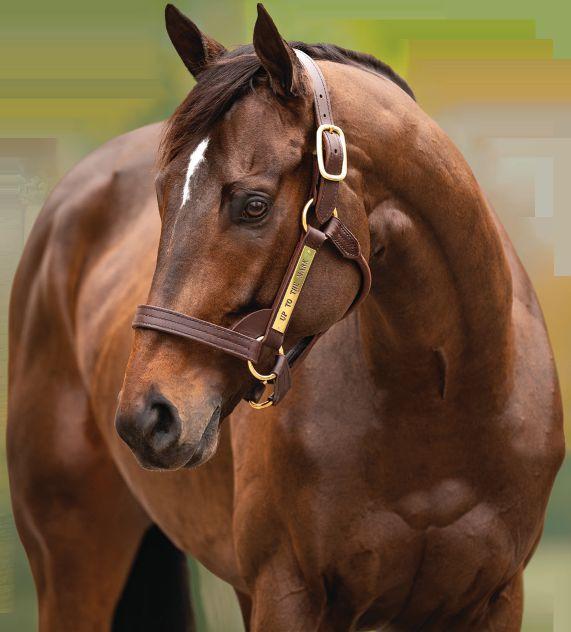

RENA BAER
(Nature in the City) is a freelance writer, editor, and photographer who lives in Lexington, Kentucky, and whose work has appeared in a multitude of magazines, trade publications, and books. Her fortes are nature travel and personality profles.
WILLIAM BOWDEN
(A New Chapter) most recently worked as publications editor at Transylvania University. He was formerly a writer and an editor at the Somerset (Kentucky) Commonwealth Journal, the Lexington Herald Leader, and the NationalTour Association.
EDWARD L. BOWEN
(Impressive Milestone) is the former president of the Grayson-Jockey Club Research
Foundation. He is a former editor-in-chief of BloodHorse and has authored 22 books aboutThoroughbred racing and breeding. His latest book is “Doing the Usual, Unusually Well: A History of Claiborne Farm.”
JACALYN CARFAGNO
(SmallTown, Big Impact) is a professional writer and an editor based in Lexington. She has covered the equine industry and written restaurant reviews and commentary for the Lexington Herald Leader in addition to working for a wide range of clients.
LIANE CROSSLEY
(Making MemoriesWith Memories) has spent her career inThoroughbred racing-related jobs in barns, press boxes, and
offces. A seasonal member of Keeneland’s media team, she has had her work appear in BloodHorse, Daily Racing Form,Thoroughbred Daily News, Breeders’ Cup website, Horse Illustrated, European Bloodstock News, andYoung Rider.
PATTI NICKELL
(History + Hospitality) is a freelance travel writer whose work has appeared in major newspapers and national magazines. She currently writes travel articles for the Lexington Herald Leader.
AMY OWENS
(Keeneland News/Connections) is Keeneland Communications Associate.
LENNY SHULMAN
(Impeccable Collection) is a senior correspondent for BloodHorse and the author of “Head to Head: Conversations with a Generation of Horse Racing Legends,” “Justify: 111 Days toTriple Crown Glory,” and “Ride ofTheir Lives:The Trials andTurmoil ofToday’sTop Jockeys.”
MARYJEAN WALL
(Unmatched Legacy) won multiple Eclipse Awards during her 35 years asTurf writer for the Lexington Herald Leader. In addition to “Madam Belle: Sex, Money, and Infuence in a Southern Brothel,” she also is the author of “How Kentucky Became Southern: ATale of Outlaws, HorseThieves, Gamblers, and Breeders.” She holds a doctorate from the University of Kentucky


2024 Stud Fee: $250,000 LFSN
CURLIN IS THE ONLY SIRE IN HISTORY TO HAVE PROGENY WIN FOUR INDIVIDUAL ECLIPSE AWARDS IN THE SAME YEAR.

IN THE 40 YEAR HISTORY OF THE BREEDERS’ CUP, CURLIN RANKS #1 BY BREEDERS’ CUP WINS.
CURLIN IS THE ONLY STALLION TO HAVE SIRED THE WINNER OF THREE BREEDERS’ CUP RACES ON THE SAME DAY.

www.hillndalefarms.com
Keeneland will award a season record $8.1 million for 19 stakes headlined by the $1 million Toyota Blue Grass (G1) during its 2024 spring meet, which spans 16 days from April 5-26. Tis year marks the 100th running of the Blue Grass, an iconic fxture for 3-year-olds. Other Grade 1 races during the season are the Central Bank Ashland, the Madison, the Maker’s Mark Mile, and the Jenny Wiley — each worth $600,000.

Keeneland Library’s popular lecture series, which spotlights recently published works about Toroughbred racing whose authors conducted research at Keeneland Library, has two upcoming events. Tese authors will discuss their books, with each presentation followed by a reception and book signing: John Paul Miller, “False Riches” (March 7) and Avalyn Hunter, “Te Kentucky Oaks: 150 Years of Running for the Lilies” (May 9).
Contributing to the spring meet stakes purses is a total of $1.5 million available from the Kentucky Toroughbred Development Fund (KTDF).
“Lucrative purses and outstanding competition make Keeneland’s spring meet a highlight of the racing calendar for horsemen, horseplayers, and fans during the frst half of the year,” Keeneland Vice President of Racing Gatewood Bell said. “We look forward to hosting the country’s best horses and their connections here in April.”
Te Blue Grass has been held at Keeneland since the track’s frst spring meet in April 1937. Scheduled on the frst Saturday of the season, the 11⁄8-mile race was inaugurated in 1911 at the Kentucky Association track near downtown Lexington and was run there through 1914 and again from 1919-26.
Following the closure of the Kentucky Association track, the Blue Grass was continued at Keeneland and has been won by such Racing Hall of Famers as Bimelech
(1940), Coaltown (1948), Round Table (1957), Northern Dancer (1964), Arts and Letters (1969), Riva Ridge (1972), Alydar (1978), Spectacular Bid (1979), Holy Bull (1994), and Skip Away (1996).
Toyota began to sponsor the Blue Grass in 1996. Te purse was $1 million in 2015-2019 and returned to seven fgures in 2022.
Te frst day of the spring meet features three stakes for 3-year-olds anchored by the 86th running of the Central Bank Ashland for top sophomore fllies at 11⁄16 miles. Te day features two other stakes each worth $400,000: the Transylvania (G3), at 11⁄16 miles on the turf, and the Lafayette, a 7-furlong dirt race.
Tis marks the 20th running of a Keeneland stakes sponsored by Central Bank, which sponsored the Transylvania from 2005-2009 and began sponsoring the Ashland in 2010.
Keeneland will bridge the gap between racing and auctions on closing day, Friday, April 26. Te race card will feature the $300,000 Bewitch (G3), for fllies and mares at 1½ miles on the turf.
Following the races, Keeneland will hold the April selected horses of racing age sale.
Programs are held at Keeneland Library from 6:30-8:30 p.m. Partial proceeds from ticket sales beneft the Keeneland Library Foundation, which supports the library’s preservation, education, and outreach mission and funds projects to expand access to its collections.
For event details and to purchase tickets, visit Keeneland.com/library.
“I’m delighted to be part of the Keeneland Library Lecture Series,” Hunter said. “Te library is a treasure to any researcher interested in the history of the Toroughbred and has been generous with its help on research issues. I’m glad to have the opportunity to share some of what I have learned about the history of the Kentucky Oaks and to contribute to the library’s unique place in the Toroughbred community.”

GUN RUNNER
BY CANDY RIDE (ARG) OUT OF QUIET GIANT $250,000 LFSN
FUNTASTIC
BY MORE THAN READY OUT OF QUIET DANCE $5,000 LFSN
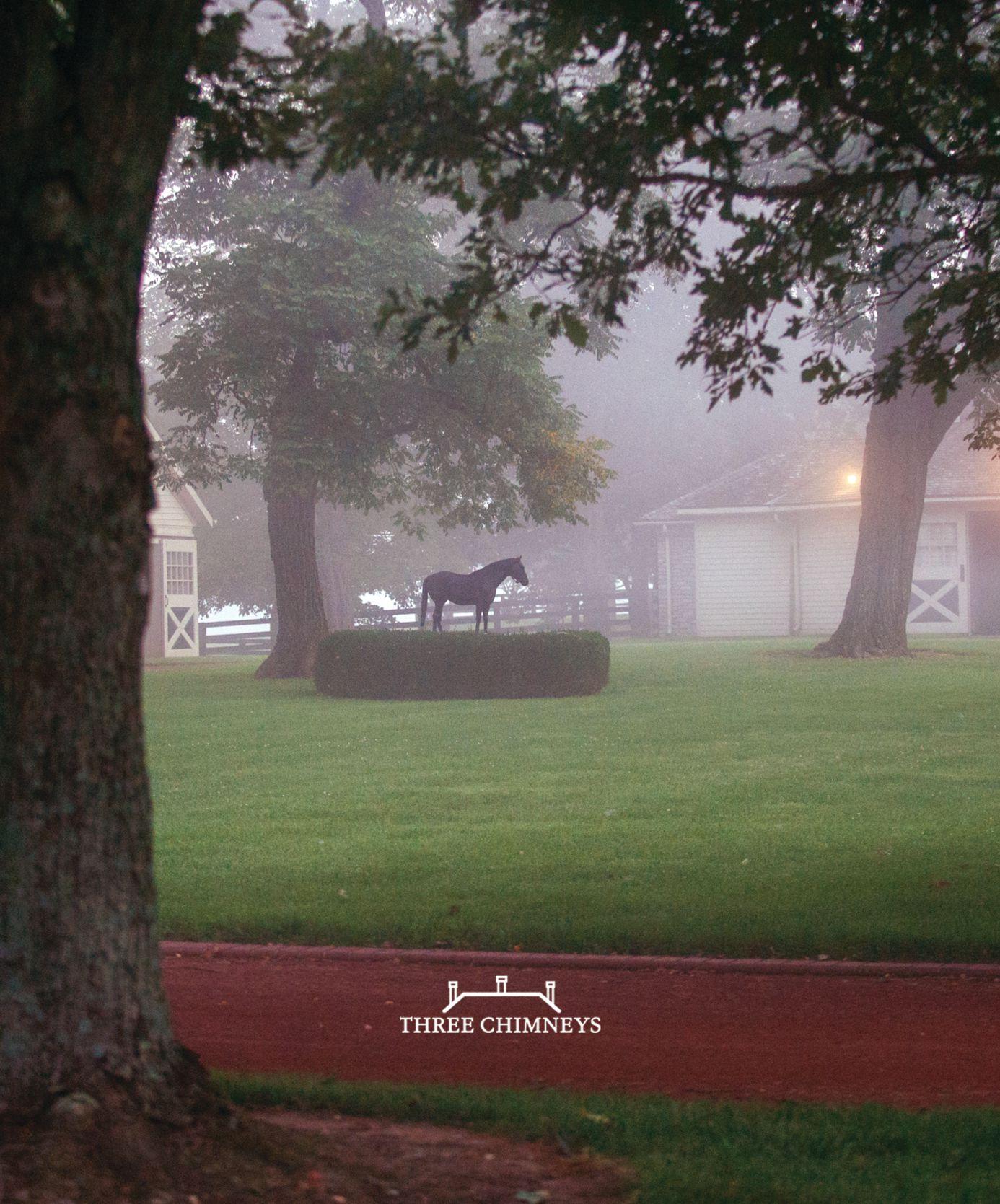
VOLATILE
BY VIOLENCE OUT OF MELODY LADY $15,000 LFSN
SKY MESA
BY PULPIT OUT OF CARESS $10,000 LFSN
Quality horses sold at a premium at Keeneland’s three recent Toroughbred auctions.
At the January horses of all ages sale from Jan. 8-11, three horses — led by broodmare prospect Prank at $1.6 million — sold for $1 million or more, equaling the most seven-fgure horses at the sale since 2013 and the frst such sales since 2019.
“Te January sale continued the consistent and stable market environment we saw last fall,” Keeneland President and CEO Shannon Arvin said. “Quality individuals were highly prized, and the competition from a global buying bench drove healthy results. We thank all our participants for their support.”
Tom Wachman, 19-year-old grandson of Coolmore founder John Magnier, paid $1.6 million to acquire Prank for Coolmore. A 4-year-old daughter of Into Mischief, Prank is a half sister to Belmont (G1) winner Mo Donegal and was an impressive debut winner at Saratoga. She was consigned by Gainesway, agent.

Two months earlier, Keeneland presented the November breeding stock sale from Nov. 8-16 and the one-day horses of racing age sale the following day. Te former produced 12 seven-fgure horses and the eight highest-priced

million.
weanlings sold at public auction in North America in 2023.
Topping November sales at $2.9 million was stakes winner Puca, in foal to Good Magic with a full sibling to 2023 Kentucky Derby (G1) Mage. Gavin O’Connor, agent, acquired Puca on behalf of John Stewart through a private post sale. She was consigned by Case Clay Toroughbred Management, agent.
Te November sale featured the frst mares ofered at Keeneland in foal to 2022 Horse of the Year Flightline, who was represented by seven mares sold for $6,625,000. Flightline led covering sires by gross and ranked second to Into Mischief by average with $946,429. Te most expensive mare in foal to Flightline was Grade 1 winner Dalika (GER), who is carrying her frst foal and sold for $1.65 million to Pursuit of Success LLC.
Two horses coming of victories topped the November horses of racing age sale at $350,000 each. Te frst was Double Dream, a 3-year-old flly by Curlin consigned by ELiTE, agent, and the second was Edgartown, a 2-year-old colt by Quality Road consigned by Highgate Sales, agent. Case Clay bought both horses for separate interests.
Keeneland’s next auction is the April selected horses of racing age sale on Friday, April 26, closing day of the spring meet. Te sale will begin afer the races.



Noted sports commentator and Lexington native Tom Hammond, left, with Nick Luck, received the 2023 Special Eclipse Award for Career Excellence. Hammond spent 10 years as a pedigree announcer at Keeneland sales early in his career. He became well known for broadcasting college and NBA games, college and NFL games, and the Olympic Games, as well as Thoroughbred racing.
Three horses sold at Keeneland’s prestigious September yearling sale were named 2023 champions on Jan. 25: Arcangelo (pictured), Elite Power, and Up to the Mark.

LeRoy Neiman’s iconic “Secretariat,” a signed oil on board dated ’73, sold for $146,875 to top the 11th Sporting Art Auction held Nov. 18 at Keeneland’s sales pavilion. The auction, a collaboration between Cross Gate Gallery and Keeneland, posted gross sales of $2.8 million. Secretariat was in an impressive grouping of works to commemorate the 50th anniversary of his Triple Crown triumph. Keeneland’s portion of auction proceeds continues its mission to beneft nonproft initiatives.

Old Friends, the popular Thoroughbred retirement farm featured in the Winter 2023 issue of Keeneland magazine, has new leadership. Succeeding founder Michael Blowen, left, is president and CEO John Nicholson, best known as the former executive director of the Kentucky Horse Park. His brother Nick Nicholson was Keeneland’s president from 2000-2012.


















Creative, chef-driven menus, the freshest local ingredients, and exceptional hospitality come together for
Liane / Photos
hen Cara Hochhalter was asked to provide a pop-up kiosk on opening day of Keeneland’s 2023 October meeting, she immediately accepted. She knew that showcasing her Maple & J jewelry near the saddling paddock on an afernoon highlighted by the Darley Alcibiades Stakes would connect her to her late father, Sam Maple, who rode Post It to victory in the 1994 Alcibiades.


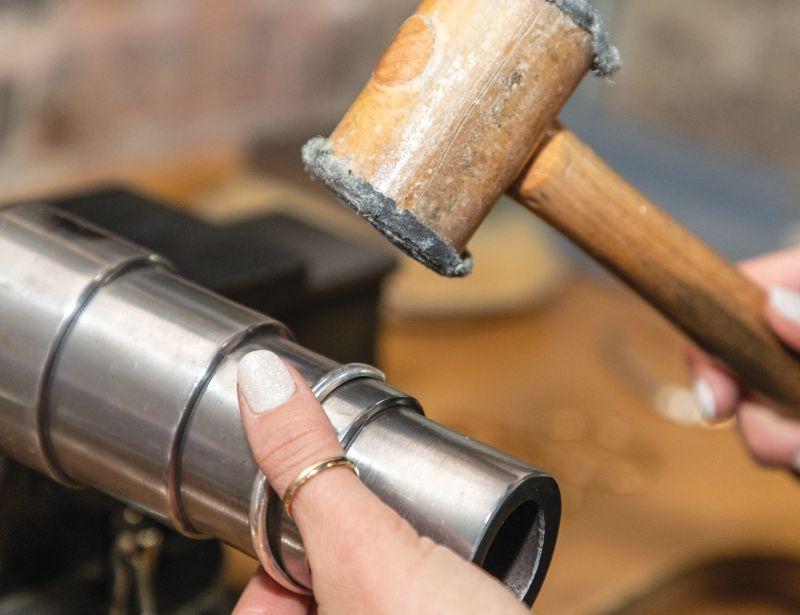
“To be able to work where my dad worked and have that connection was just so special and so healing,” said Hochhalter, who founded and co-owns Maple & J with her husband, A.J. “In a way, it was a bond with him that I had not been ofered.”
Hochhalter was just shy of her 16th birthday when Sam Maple lost his long battle with cancer in 2001. His 2,578 victories include the aforementioned Alcibiades, 1978 Phoenix Stakes on Amadevil, and 1984 Bewitch Stakes on Heatherten at Keeneland. His surname is well known thanks to the Hall of Fame career of his older brother, Eddie.
“Anytime you have someone in your life, all you want is for others to remember them with you,” she said. “You don’t want that memory to fade. So being able to sell near the Keeneland paddock and have people telling me they had known him, that ministered to me.”
Hochhalter’s mother, Jill, helped organize the kiosk but lef before racing began.

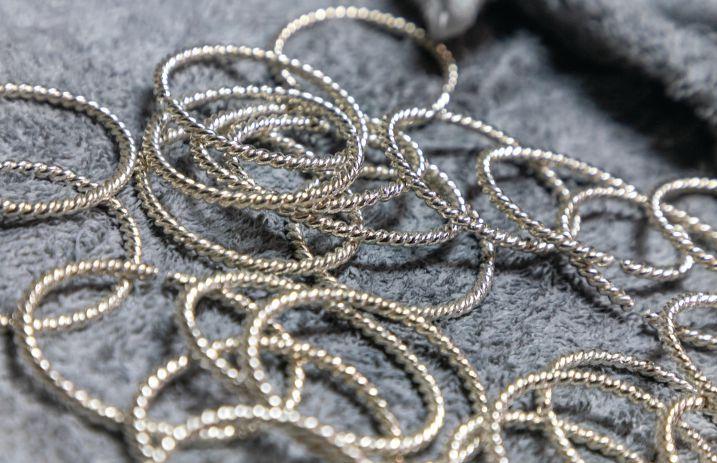
“She was too emotional to stay,” Hochhalter said. “Keeneland is where they met. She was going to Sayre School in Lexington and would sneak to the races with her friends to see my dad. He was a few years older and a jockey — and to my grandfather, that was not a good look. She was forbidden to see him. Eventually, though, my grandfather fell in love with my father and approved.”
Despite her grandfather’s early concerns, Sam and Jill Maple seemed destined to be together despite their diferences in age and backgrounds. Tey raised their four children in a tightknit family bound together by Toroughbred racing and moved as a unit to tracks across America. Te traveling ended when the Maples settled in Louisville in 1991, when Cara, the youngest, was in frst grade. Hochhalter has fond memories of


•
•
•
•
Sam Maple won the 1994 Alcibiades Stakes on Post It, among other victories at Keeneland.

•
•
•




those times, including vivid recollections of having breakfast at Keeneland’s track kitchen and of her father exercising horses in the mornings at Churchill Downs.
Tat early foundation and the continuing relationships grounded in the equine world inspired Hochhalter to use horses and racing as a theme for some of her jewelry, which is sold year-round in Te Keeneland Shop and available on Keenelandshop.com.
“Upon learning about Cara’s story and the connection between her late father and Keeneland, I knew we were on to something special,” Keeneland Director of Retail Shannon Haynes said. “With so many common values shared between our industry and hers — family, tradition, resilience, and hard work — the collaboration arose naturally.”
Travel and family values played key roles in directing Hochhalter to life as a Lexington purveyor of jewelry.
Of her earliest years, she spoke lovingly about her itinerant childhood, which required shifing homes as her father followed the racing circuits.
“I remember driving all over to California and to Oaklawn Park in Hot Springs,




 MAPLE AND J JEWELRY
MAPLE AND J JEWELRY



Arkansas, and staying in a trailer near Louisiana Downs,” she said. “Tose are some of my fondest core memories. I don’t know if it was special enough that it stood out or if those early memories are core.”
When the Maples settled in Louisville, she ofen went with the family to watch her father in Saturday races at Keeneland.
“I remember always thinking it was so beautiful and it stood out,” she said.
When Hochhalter was 15, they relocated to the quaint town of Wilmore, 20
miles southwest of Lexington. She went on to study family consumer science at the University of Kentucky, where she met her future husband through Christian Student Fellowship. She was hesitant to enter a romantic relationship because of their two-year age gap. He had barely started college, and she was nearing graduation. But afer a faith-based group excursion to Arizona and the two remaining friends for a year, she changed her mind. Te day afer she graduated in 2009, they married.





 MAPLE AND J JEWELRY
MAPLE AND J JEWELRY



A.J. graduated a year later with a bachelor’s degree in business management. In addition to his partnership and marketing roles at Maple & J, he is an award-winning composer at the Sundance Film Festival, flm producer, and creative consultant. His packed resume includes producing the internationally distributed documentary “Neat: Te Story of Bourbon” and consulting for numerous bourbon brands and other companies.
Following the birth of their son, Justus, in 2012, the clan expanded with three daughters — Maple, Luella (“Goldie”), and Shiloh. Te couple has lived in Lexington since college.
Hochhalter was not seeking a career when she found one. Or maybe the career found her. Raised with exceptionally strong family values amid the unconventional constant uprooting of racetrack life, Hochhalter aspired to emulate her stayat-home mother. But that plan changed in a roundabout manner during college. She took time of to live in China for a year with her sister and brother-in-law, who were missionaries, and their young child. She noticed the children there wore jewelry similar to what her parents had given her. When her son was born 12 years ago, Hochhalter wanted a baby
Apiary has earned a reputation of culinary excellence and hospitality over the past 15 years. We now open our doors to you


Monthly dinners, parties, and events open to the public

bangle for him. She said although children’s jewelry is common in Latin America and Asia, she could not fnd quality afordable styles in the U.S.
“I grew up loving jewelry,” she said. “My mother’s mother was always accessorized and a bit of a diva. And I loved that.”
She decided to create her own line using skills learned from her father, who refurbished and sold homes afer retiring in 1996.
“My dad was very handy, and we grew up doing construction and remodeling,” she said. “It was not unusual to try to fgure out how to make something. So I bought material and started tinkering with it. I had a love for the jewelry but felt intimidated to start selling it.”
She launched the business with just
‘‘ MAPLE & J STANDS FOR SOMETHING REAL AND TOUGH, YET SENTIMENTAL, BECAUSE THEY BECOME PART OF YOUR STORY.”
— CARA HOCHHALTER
baby bangles in 2014 in her home’s laundry room and later added adult merchandise. She named the company afer her older two children — Maple and Justus, nicknamed J. With the slogan “Never take it of,” the brand was an immediate success because of its unique style, comfort, durability, and price.
Te pieces are meant to be passed down as heirlooms as a remembrance of those who always wore them. Te bangles provide a connection to family and friends and can be paired with matching pieces. Te “never take it of” option streamlines the process of accessorizing because the items can be worn continuously.
“Maple & J stands for something real and tough, yet sentimental, because they become part of your story,” Hochhalter said.
Her favorite piece is a basic silver bangle reminiscent of the one she purchased in the Tibetan Mountains that inspired her to create her own line, which ranges from simple gold hoop earrings to intricate bracelets and necklaces. Other favorites include the sleek Jockey cuf, a tribute to Sam Maple, who is described by Hochhalter as “the toughest jockey of all time,” and the Flora Jane, a foral-patterned cuf in silver or gold named for her fashion-loving grandmother. Ornate or twisted pieces provide texture and strength when worn with simple pieces. Most are priced at about $100 and are available online, in Maple & J’s Lexington store, and at Te Keeneland Shop on the track’s south side.
Te downtown boutique, with a prominent Maple & J sign, is on the busy eastern edge of downtown, close to Toroughbred Park, which features realistic life-sized bronze statues of horses and jockeys. Te Hochhalters recommend reserving a time slot for shopping in the elegant showroom.
Maple & J’s popularity has grown since
those early days in the laundry room, but Hochhalter is in no hurry to expand. She prefers focusing on family. She carries that philosophy into her hiring practices with a staf of about 10 that has fexible hours and consists of a number of workfrom-home mothers. Her entire business remains true to her roots.
“Racing and the racetrack lifestyle were a part of me; I identifed with it,” she said. “It was so much of our family foundation. It was so important to my parents that we stayed together and traveled with my father. My life and my jewelry are refections of those times.” KM




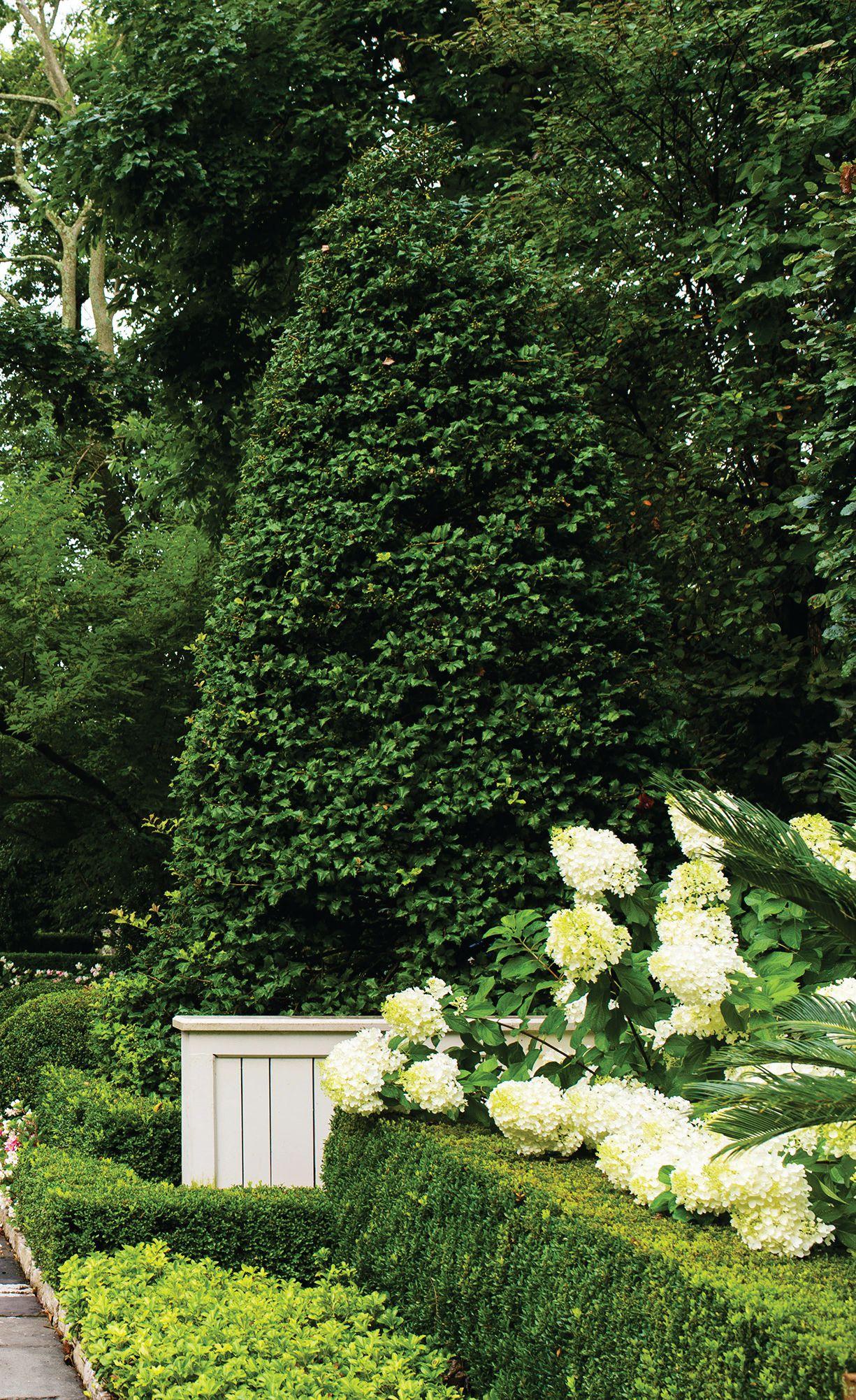
We create living intersections of context and history - spaces for connection, beauty and a sense of place.
MANDY POPE helps preserve top American bloodlines through her high-end purchases of celebrated fllies and mares
By Lenny ShulmanShulman
Photos by David Coyle
Photos David
Mandy Pope welcomed Shedaresthedevil’s Gun Runner flly during a February visit to Gainesway Farm.




2013, at the Keeneland November breeding stock sale, the father-and-son team of Fred and Buf Bradley looked on nervously from the back of the sales pavilion as their two-time Breeders’ Cup-winning mare, Groupie Doll, entered the ring. Buf had trained the mare for his father, and she meant the world to them. She had become too valuable to hold onto, and the anxiety of parting ways with her hung heavily in the air. Afer minutes of spirited bidding, the Bradleys’ faces lit up brighter than the bid board when they realized their mare would be remaining in Central Kentucky, purchased by a woman few had even heard of a couple of years before.
Amanda (Mandy) Pope began in Toroughbreds as a modest breeder plying her trade in Florida. From a dozen-strong broodmare band, she had produced some successful runners in Puerto Rico and the occasional stakes winner on the mainland. Her anonymity ended abruptly in 2012. Fueled by funds from her family’s chain of retail shops, Pope shifed her operation into overdrive and hit the headlines by acquiring at auction mares such as Horse of the Year Havre de Grace, Kentucky Oaks winner Plum Pretty, and now champion Groupie Doll.
At a time when most quality breeding stock was leaving North America via sales to European, Asian, and Pacifc Rim interests, Pope’s purchases made her a hero for preserving domestic bloodlines, and her Whisper Hill Farm became a major player in the Toroughbred market. Oh, yes, she also kept Groupie Doll in training with Buf Bradley for a couple more races, and the team enjoyed an emotional victory with her in the Hurricane Bertie Stakes in early 2014.
Breeding — particularly the art of furthering and developing female families — is not a quick process, particularly compared with racing that, in a minute or two, delivers the action and thrills that determine brilliance and winners. Yet today, Pope is making headlines for diferent reasons: First, the families of those splashy mare acquisitions are now yielding highdemand sale horses. At Keeneland’s 2023 September yearling auction, her broodmares delivered an astounding fve yearlings that sold for a million dollars or more. And secondly, her racing stable has included Kentucky Derby runners in each of the past two years.
Pope’s high-octane mare purchases have helped launch the ascension of Whisper Hill to a trusted purveyor of quality bloodstock. Top race mares may sometimes succeed in reproducing themselves; ofen, though, racing talent will skip a generation. Today, the daughters of Pope’s original big-ticket purchases are producing the next generation for whom buyers are feverishly bidding. While having a good-looking individual is key to attracting attention, the appearance of famous names close-up in pedigrees is also a potent selling point. Pope’s business plan is coming to fruition.
Along the way, Pope has needed to grow accustomed to the added attention that comes from procuring mares that have raced their way into the hearts of fans and industry insiders.
“Tere is absolutely more pressure now with the high-profle purchases,” said Pope days before the 2023 Keeneland November breeding stock sale. “I liked it better when people weren’t paying too much attention to me. Te stress is tenfold, making sure we do the right thing. When things go well, that’s great. People are only going to say great things. But we all know there are many things that don’t go well in this business, and the operation is under my name. I’ve learned to stay away from social media and the blogs, because there is so much negativity there.
“Fortunately, I’ve got a great team behind me.”
Tere is little danger of Pope not doing right by her horses. Growing up in North Carolina, she was the quintessential horse-crazy young girl. By kindergarten, she was riding her own pony, which became the center of her existence. She developed into a rider with enough chops to compete showing hunters in the National Horse Show at New York’s Madison Square Garden. When she moved her




horses south to Ocala for a winter circuit, she became acquainted with the world of Toroughbred racing and breeding.
John Pope, her father, founded Variety Wholesalers, a chain of privately owned retail stores throughout the Southeast and midAtlantic. In the early 1980s, with her father’s help, Mandy bought a 55-acre farm in Citra, near Ocala, and named it Whisper Hill afer her show horse Blue Whisper. By the early 2000s, she was seeing the fruits of her breeding operation. Morning Meadow earned a grade 3 victory. Ticket to Seattle became a stakes winner. Sam P. hit the board in a grade 1 event. Launch Sequence was a two-time champion flly in Puerto Rico, and Outstanding Lady was a multiple stakes winner. Pope’s progression in the Toroughbred world was charting a steady arc.
Following John Pope’s death in 2006, Mandy became co-owner of the family business with her brother and was able to begin operating on a higher level with her bloodstock purchases. In 2012, entering the top of a market dominated by European consortiums, burgeoning Japanese breeding operations, and Middle East oil money, Pope won a bidding war for reigning Horse of the Year Havre de Grace. In doing so, she parted with $10 million, the most ever paid for a broodmare prospect in North America. Tat same year, she spent $4.2 million at Keeneland November for multiple grade 1 winner Plum Pretty.
Te following year, Pope obtained Groupie Doll for $3.1 million. Whisper Hill would go on to annex dual-champion Songbird ($9.5 million); Kentucky Oaks victress Shedaresthedevil ($5 million); dual grade 1 winner American Gal ($3 million); and grade 1 winners Wicked Whisper ($2.9 million), Hard Not to Love ($3.2 million), and Unrivaled Belle ($3.8 million). From a prestigious Phipps family, Pope bought Magical World ($5.2 million). Pope also bought from the Keeneland September yearling sale the colt Tap Gun, who is a half sister to Horse of the Year and thriving stallion Gun Runner, and I’ll Take Charge, a daughter of superstar race mare Take Charge Lady. And from the Keeneland November auction in 2015, she obtained Lady Take Charge, a half sister to I’ll Take Charge.
Fast-forward to 2023, and Pope was on the other side of the auction proceedings, ofering for sale produce from her purchases. At the Keeneland September yearling sale, Pope, through consigner Gainesway as agent, sold an Into Mischief colt out of I’ll Take Charge for $1.7 million. She realized $1.3 million from a Tapit colt out of Lady Take Charge, $1 million for Songbird’s Curlin colt, $1.1 million for an Into Mischief colt out of American Gal, and $1.1 million for an Into Mischief colt out of Magical World.
It can be a dizzying cycle to be both buying and selling stock for such extraordinary sums, but Pope seems to have a more relaxed time watching others bid for her horses.

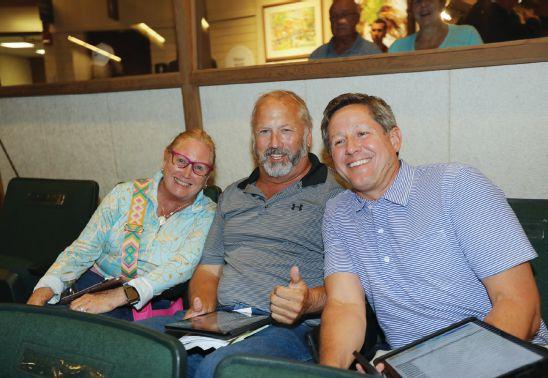
As a breeder, Pope has hit some home runs with yearlings such as the Into Mischief—I’ll Take Charge colt, top, that sold for $1.7 million at the 2023 Keeneland September yearling sale. Above, Pope attends a Keeneland sale with key advisers Todd Quast, center, and Brian Graves, right.
“It is much more gratifying to be selling, because you’re getting your rewards right then and there,” she said. “While my love of my horses can make it difcult to let go of them, I have found that the higher the price goes, the easier it gets.” Pope laughed, because the line is only partly true. She is more than happy to stay in on a horse she is selling, “to continue the journey with the horse and the new partners, which is a fun way to do it.” She has retained co-ownership in Songbird, American Gal, and I’ll Take Charge yearlings from 2023.


Partnering on horses can also help spread risk when Pope is buying. When she purchased a Tapit colt from Gainesway at auction in 2021, she allowed the farm to come back in for 25%. Pope named the colt Tapit Trice, and he went on to win the Toyota Blue Grass Stakes, the Lambholm Tampa Bay Derby, and run third in both the Belmont Stakes and Travers Stakes. Tapit Trice, who also competed in the 2023 Kentucky Derby, has earned $1.2 million.
Pope’s racing stable, which numbers about a dozen runners at any given time, delivered a second outstanding performer as I’ll Take Charge’s son by Tapit, Charge It, won the 2022 Dwyer Stakes and returned in 2023 to take home the Suburban Stakes. Charge It ran in the 2022 Kentucky Derby afer fnishing second in the Florida Derby and has earned $851,600 to date.
Tat Pope’s racehorses are proving talented enough to one day become stallions opens up further possibilities for Whisper Hill’s future.
“You have a big potential payday when you race a good colt and can stand them or sell them as a stallion,” she noted. “Tat is part of the business plan,
and you have a better chance at turning a proft when you have these kinds of racehorses.”
Pope and Gainesway have forged a relationship partnering on both broodmares and racehorses over the past fve years. Tat has led to Pope boarding her mares at the showplace nursery just east of Lexington on Paris Pike. Previously, Wayne and Cathy Sweezey of Timber Town farm oversaw the Whisper Hill broodmare band, foaling the babies and raising them through the weaning process. Te Sweezeys have recently retired from most of their duties and have sold Timber Town. Tus, Pope’s 40-plus strong band of mares has been relocated.
“Mandy is a very passionate horsewoman of the highest caliber,” said Gainesway general manager Brian Graves. “She is very pragmatic in the way she looks at her herd. She demands attention to detail and wants her horses to be raised like horses. And, of course, she has accumulated a broodmare band that is second to none, and her passion for her mares continues strong.”
Graves is part of the advisory team Pope has assembled in the past few years. While assigning considerable credit to the Sweezeys for their care of her horses, she has had to adjust personnel and focus as Whisper Hill has put more emphasis on its racing stable. Bloodstock agent/manager Doug Cauthen and his wife, Katie, have come aboard to help plan the matings of Pope’s mares. John Prather also advises on breedings. And Todd Quast, who spent more than a decade on legendary trainer D. Wayne Lukas’ team, is Whisper Hill’s general manager and trainer of Pope’s young stock in Florida.
“Mandy and I came together in 2019,” said Quast, who was previously general manager of Gold Mark Farm in Florida. “At frst, the program was geared to sell and not race. But we opened the Whisper Hill Training Center just fve miles from her farm, and we can raise the horses in the exact way Mandy and I want to do it. Controlling the development of the horses has been key. Charge It is part of the frst group we had there, and Tapit Trice is part of the second group. In this business, you have to be into a little bit of everything and take advantage of each one, and we’ve been able to do that now in stakes races the past two years.”
A LOT OF PEOPLE THANKED ME FOR KEEPING THE MARES HERE.”
—Mandy Pope
Te training center is on land previously owned by Norman Casse, father of trainer Mark Casse. Casse transformed the Central Florida acreage into a horse center, and its 103 acres now host a refurbished training track and 50 stalls. New paddocks have been constructed, and there are riding trails that help the horses progress organically. Pope and Quast give credit to the staf at Whisper
Hill, which includes principal veterinarian Dr. Greg Bonenclark and Lee Guerrero, with whom Quast has worked since their days with Lukas.
Pope’s original Whisper Hill Farm down the road has now grown to 380 acres. When her young horses are weaned from their dams in Kentucky, Pope brings them to her farm in Florida to continue their growth.
“I think the weather in Florida is greatly benefcial to them,” said Pope. “Tey don’t have to go through hard winters in the North, and that tends to give them a more consistent growth and weight-gain pattern, which I believe is good for the development of their bones and joints. Tey can continue growing rather than just trying to stay warm.
“Also, I live in Florida, and I get to see them all the time and be a part of that.”
While in Kentucky for the sales, Pope enjoys spending time in the paddocks with her mares. Asked what it is like to be around classy horses such as Songbird, Pope said, “I think they know that they’re great. When you go out in the feld and see them, they still have that look of eagles about them. Teir personality; the way they hold themselves; their eyes and ears; and their body language. Tey know they’re special, and that’s awesome. Tey’re all treated the same, but they know who they are.”
Havre de Grace and Plum Pretty have passed on, but Pope and her team are now breeding their daughters and raising their grandchildren. It is part of the cycle of life that Pope always knew would be part of the greater plan.
“It’s really cool that we are now seeing their grandchildren being born
and coming on board,” she noted. “You can see traits. Havre de Grace always had this look in her eyes, with a bit of white at the corners, and those big ears. And most of the family’s foals also have her eyes and ears.”
Havre de Grace’s daughter Graceful Princess, a grade 3 winner, produced a 2023 Into Mischief colt, and she is in foal to Gun Runner. Her full sisters Heavenly Grace and Perfect Grace are both due to drop foals by Curlin in 2024. Plum Pretty’s frst foal, Pretty At War (by War Front), was a winner at the races and has produced fllies by Speightstown, Tapit, and American Pharoah the past three years. Pope has several other well-bred daughters of Plum Pretty moving through the pipeline. Groupie Doll has also become a grandmother.
“A lot of these mares were valuable not only for what they were going to produce but also what their daughters will produce and what their grandchildren will do, and on down the line,” Pope explained. “We want to continue it on, and I’m really excited and looking forward to when these grandchildren start hitting the track.”
Pope plays an active role in helping plan the matings of her mares, which entails a considerable amount of work given the size of her enterprise. She spends several days huddled up with the Cauthens and Prather, who each do extensive research before meeting with Pope and discussing options.
“We go through the names and put them up on a big screen and discuss the pedigrees, how the physicals match up, and get one or two strong options for each mare,” noted Pope. “It’s an involved process, and I’m thankful for all the work they do to help it along.”




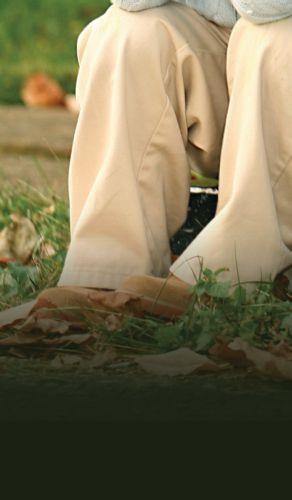



Te Cauthens have been aboard for the past two seasons of matings, having met Pope when she partnered on a horse with Tree Chimneys Farm, where Doug Cauthen serves as a board member.
“It’s been a great relationship for me and Katie,” said Cauthen. “Mandy is very involved and ofers good insights. It’s awesome doing matings for great mares like hers because you’ve got a lot better chance of getting a good result. It’s an honor.
“And we’re already doing research on Charge It and Tapit Trice for when they retire, looking ahead to study what might be best for them as stallions. Te future is bright.”
It is not surprising that Pope leans toward the top of the stallion rankings when selecting partners for her mares. Tapit, Into Mischief, and Curlin are kept busy with Whisper Hill visitors. Gun Runner is also being visited by some of her best mares. But Pope will spread to some younger stud horses as well.
“With the young mares, we will go to a proven stallion to get them of on the right foot,” she said. “Others who already have racehorses out there, we will take a shot at the newer stallions. We are sending mares to Flightline. Songbird’s frst daughter, Song Belle,

is going to him. Unrivaled Belle [who has produced two-time champion Unique Bella] and Princess Sylvia [who has produced a million-dollar yearling] as well. We kind of mix and match.”
For all the individual success her horses are beginning to enjoy on the racetrack and in the sales ring, Pope’s long-term importance to the domestic Toroughbred industry will be the bloodlines she has preserved for American breeding.
“I take pride in that, absolutely, because so many of those mares go overseas,” Pope said. “It was amazing, the outpouring of gratitude when I was the one who ended up with them. A lot of people thanked me for keeping the mares here.” KM






















































 BRIDGETT COLLIER
FRED COPELAND
AMY DIAMOND-KIPER
KEN DONWORTH
JOHN SCOTT DURBIN
WHITNEY DURHAM
LAUREN DOWNS
JENNIFER BELL
BETSY HERRINGTON
GWEN MATHEWS
MINA MATTONE
JIM MCKEIGHEN
MICHAEL MCNEILL
EMILY MILLER
CHRIS MITCHELL
STEVE MOORE
MIKE MORRISON
DANIEL PORTER
ANDREW MOREMAN
ALEX LENNON
BARB FARRELL
BLAKE FERGUSON
MARCUS HAMMOND
PEPPER JOHNSTONE
ABBY JONES
SUSAN KENNEDY
ANDREW KLEIN
STEVE KLEIN
KITTY LANE MEREDITH LANE
KAREN HOLLINS
MEREDITH PRICE
BRANDY QUINN
BILL RANSDELL
ERIN RAYMOND
BECKY REINHOLD
STEVE ROBERTS
JENN SEITZ
AMBER SIEGELMAN
BRADFORD QUEEN
DAWN SCOTT
PAM STILZ
JIMMY TUREK MARY GARDNER TURNER
MEREDITH WALKER
BRYAN WEHRMAN
CHRIS WELLS
CAROLYN WHEELER NIKI WILEY
KRISTOL YEAGER
COREY WATSON
JAKE WISEMAN
DAN ELKINSON
SARA MORKEN
BRIDGETT COLLIER
FRED COPELAND
AMY DIAMOND-KIPER
KEN DONWORTH
JOHN SCOTT DURBIN
WHITNEY DURHAM
LAUREN DOWNS
JENNIFER BELL
BETSY HERRINGTON
GWEN MATHEWS
MINA MATTONE
JIM MCKEIGHEN
MICHAEL MCNEILL
EMILY MILLER
CHRIS MITCHELL
STEVE MOORE
MIKE MORRISON
DANIEL PORTER
ANDREW MOREMAN
ALEX LENNON
BARB FARRELL
BLAKE FERGUSON
MARCUS HAMMOND
PEPPER JOHNSTONE
ABBY JONES
SUSAN KENNEDY
ANDREW KLEIN
STEVE KLEIN
KITTY LANE MEREDITH LANE
KAREN HOLLINS
MEREDITH PRICE
BRANDY QUINN
BILL RANSDELL
ERIN RAYMOND
BECKY REINHOLD
STEVE ROBERTS
JENN SEITZ
AMBER SIEGELMAN
BRADFORD QUEEN
DAWN SCOTT
PAM STILZ
JIMMY TUREK MARY GARDNER TURNER
MEREDITH WALKER
BRYAN WEHRMAN
CHRIS WELLS
CAROLYN WHEELER NIKI WILEY
KRISTOL YEAGER
COREY WATSON
JAKE WISEMAN
DAN ELKINSON
SARA MORKEN












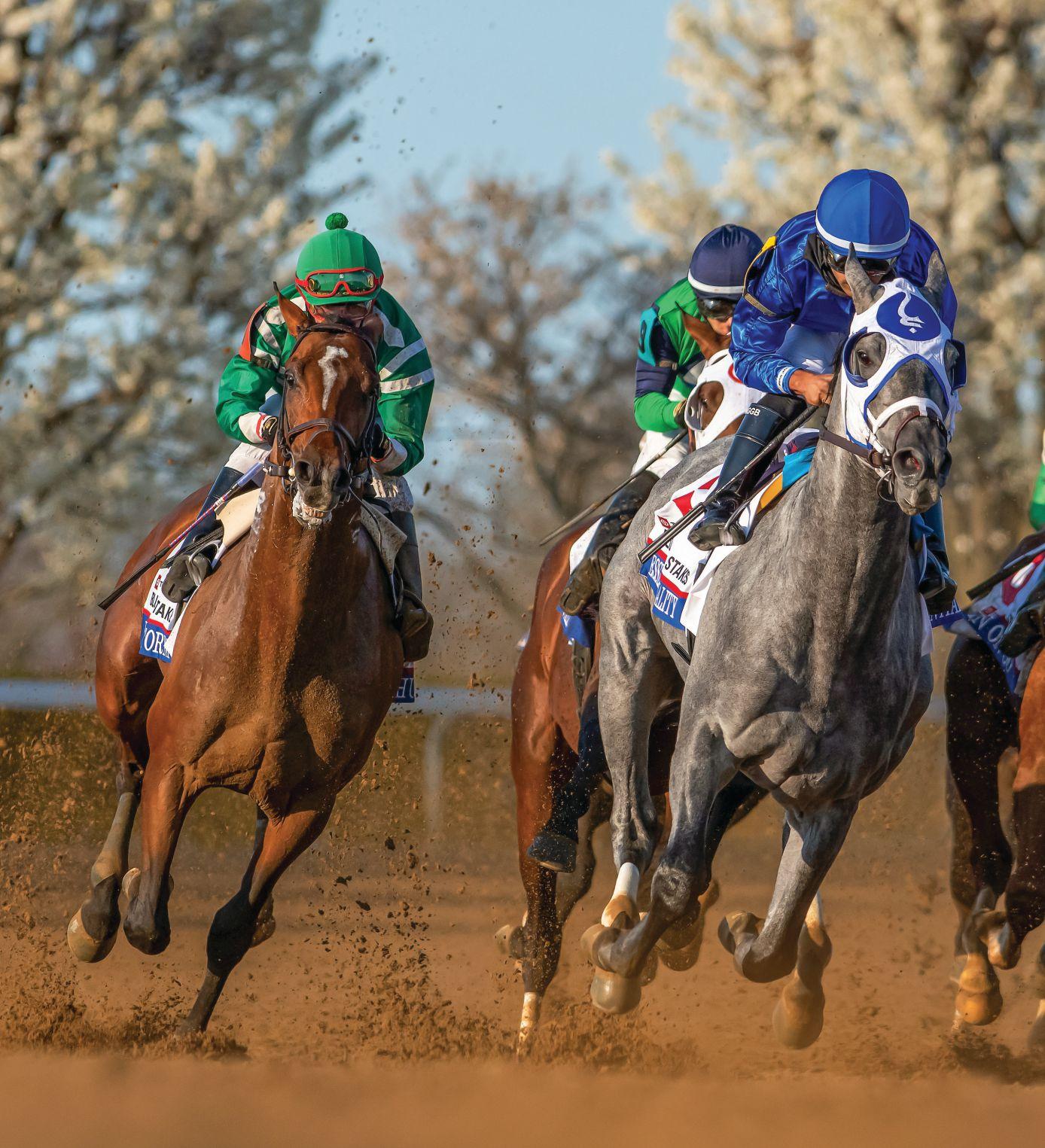

The storied BLUE GRASS STAKES, which has produced Kentucky Derby winners, innumerable champions, and infuential stallions, celebrates its 100th RUNNING
By Edward L. Bowen L. BowenA number of Blue Grass Stakes winners have used Keeneland’s signature race for 3-year-olds as a springboard to classic glory, such as Essential Quality (second from left), who won the 2021 Belmont Stakes as well as the Travers Stakes.

Wwill be
When horses enter the starting gate for the April 6 Toyota Blue Grass Stakes, it will mark the 100th running of Keeneland’s marquee 3-year-old race. Tat milestone will be complemented by another signifcant event as the Kentucky Derby has its 150th running four weeks later.
Te two races have had a connection from the time of the frst Blue Grass, run at the old Kentucky Association track in 1911. Te Blue Grass was positioned on the calendar to be an obvious opportunity to prep for the Derby. In that year the Kentucky Derby at Louisville’s Churchill Downs had its 37th running, having been inaugurated in 1875. Te Derby had gone through struggles as well as its good times. It was not yet the nationally acclaimed event it would become but was an important target for Kentucky horsemen. Churchill Downs’ key race had the prestige, although the Kentucky
Association track in Lexington was much older, having frst opened in 1828.
Over the succeeding years, the Blue Grass Stakes’ value as a Derby prep has remained a part of its identity. However, signifcant changes in training philosophies — i.e., trainers’ preferences about how long they wanted between races — has meant the relationship could not be consistent from era to era. Also, the emergence of fashionable South Florida winter racing meant changes in how owners and trainers of Kentucky-based 2-year-olds would bring horses up to the next year’s Derby. Purses for races such as the Flamingo Stakes and Florida Derby came to overshadow the purses for the Blue Grass. Emergence of major preps in other parts of the nation also became a part of pre-Derby schedules.
Trough all those changes, however, the Blue Grass has been renowned as an important fxture of its own, and it has produced



many horses of major accomplishments other than Kentucky Derby performances. In addition to the prestige of colts winning the Blue Grass-Kentucky Derby double, participants in the Keeneland centerpiece have gone on to take other classic and big-name stakes races, win divisional championships, and infuence the breed as stallions.
Te frst Blue Grass Stakes was run at 11⁄8 miles at the old Kentucky Association track on May 10 in 1911, only three days before the Derby of 11⁄4 miles. In the training/racing practices of the day, a prep race three days before the next target was not unheard of.
R.G. Carman’s Meridian was second in the Blue Grass, beaten by a half-length by R.N. Smith’s Governor Gray. Both came back to contest the Derby, and Meridian reversed the order, winning by three-quarters of a length. He was the second choice at 2.90-1 to runner-up Governor Gray, the even-money favorite. Te frst Blue Grass Stakes had a winner’s purse of $2,350, a little less than half of the Derby’s $4,850.
Meridian fnished second in the frst Blue Grass Stakes in 1911, then won the Kentucky Derby.
E.R. Bradley coveted winning the Kentucky Derby, which his horses did four times, but he also had success in the Blue Grass Stakes, winning four runnings, including one at Keeneland.
In only the third running of the Blue Grass, the runner-up again progressed next to win the Derby. Tat 1913 Derby created some lasting history. Donerail fnished second in the Blue Grass but still was such a longshot in the Derby that his winning odds of 91.45-1 remain the all-time highest for a winner of the famed Run for the Roses.
Only four years afer the 1911 running, the Kentucky Derby’s status as a national event was given permanence by the victory of the champion flly Regret. Te flly had distinguished herself on the nation’s leading racing circuit, that of New York. In 1915, the New York circuit was only three years past a brief shutdown in racing caused by misguided anti-gambling forces. Nevertheless, New York had recovered sufciently that the Derby was seen in a new light nationally afer Regret’s fashionable owner, Harry Payne Whitney, extolled her Derby win. Te victory, Whitney said, would satisfy him even if she never raced again.


Afer 1914, there was a four-year gap before the next Blue Grass Stakes was run in 1919. Ten in 1921, the Blue Grass Stakes and the Kentucky Derby felt a strong impact from the growing infuence of owner and breeder E.R. Bradley. In 1906, Bradley had begun purchasing Kentucky properties he developed under the name of Idle Hour Stock Farm, and he soon emphasized the Derby in his ambitions. In 1921, Bradley won the Blue Grass with Black Servant. Te runner-up that day, Behave Yourself, reversed the order in the Derby to become the frst of Bradley’s four Derby winners.
In 1926, Bradley’s devotion to the Derby produced the frst dual winner of both the Blue Grass and the Churchill Downs classic. Bubbling Over became the frst winner of both events, and in both races Bradley horses again ran one-two. Boot to Boot was second in the Blue Grass, and Bagenbaggage was the runner-up in the Derby.
Te last running of the Blue Grass Stakes at the Kentucky Association track occurred in 1926. So even though the track did not
close until 1933, Bradley’s remaining Derby winners, Burgoo King (1932) and Broker’s Tip (1933), did not have the race available as a Derby prep.
Te 1936 opening of the sporting track of Keeneland in Lexington paved the way for renewal of the Blue Grass Stakes. Te frst running at the new track took place April 29, 1937, and was won by Fencing. In 1938, the Blue Grass winner was Bull Lea, from an emerging Lexington farm, Calumet. Bull Lea and Calumet were destined to have considerable impact on the Kentucky Derby, but not on that year’s running. Bull Lea fnished eighth in the 1938 Derby, which marked the frst wins in the race both for jockey Eddie Arcaro and trainer Ben A. Jones. Te winner was Woolford Farm’s Lawrin. Bull Lea, however, was destined for greatness as a Calumet stallion. He led the sire list fve times and sired Derby winners Citation, Hill Gail, and Iron Liege, each a Calumet homebred.









Calumet Farm owner Warren Wright Sr. soon recruited Jones as his own trainer. Jones was to become the leader in Derby wins with six, and Arcaro rose to the top among jockeys, with fve. While Jones developed a master’s touch at preparing Derby horses through winter and early spring, that touch was not particularly benefcial to the Blue Grass Stakes.
Nevertheless, Jones — who was later joined at Calumet by son Jimmy Jones — did win the Keeneland race with Calumet’s Ocean Wave in 1943. (Tat was the frst of three consecutive years when the Blue Grass was run at Churchill Downs because of World War II economic and travel policies.)
In 1947, Calumet and Jones won the Blue Grass with Faultless, who went on to win a Triple Crown race, but it was the Preakness not the Derby.
Te year 1948 saw a two-pronged strategy for Calumet. Citation, the previous year’s juvenile champion, won the FlamingoStakesonFeb.28.Hethenwas diverted to Maryland for two preps before heading to Kentucky. Citation won his Derby Trial and four days later went for the big prize. Tere, he was joined


by Calumet stablemate Coaltown, who had been allowed to prep without meeting the powerhouse that was Citation. Coaltown so wowed many horsemen in winning the Blue Grass Stakes that he had his supporters as the better of the two Calumet colts. Citation arrogantly ended such talk with an easy Derby win en route to a Triple Crown sweep.
During the 1950s, Florida winter racing developed another major prep when Gulfstream Park’s Florida Derby emerged as almost on par with the Flamingo. By 1955, the Florida Derby purse matched the Flamingo Stakes purse of $100,000. New York’s major prep, the Wood Memorial, also had a $100,000 purse. Belair Stud’s Nashua won all three. Meanwhile, out West the Santa Anita Derby was yet another $100,000 prep.
Meanwhile, the Blue Grass Stakes had been ofering lower purses and was a $25,000 event in 1955, when won by Racing Fool. Te hint of a prestige breakthrough came in 1957, when a fabulous trio of Bold Ruler,



Gallant Man, and Round Table was polishing the pre-Derby aura with a reputation as one of the best groups of all time. Calumet Farm’s Iron Liege broke into that group by winning the Derby, but subsequent racing solidifed the big three as all Hall of Famers. Travis Kerr’s Round Table had prepped in the Blue Grass, which he won by six lengths, nine days before the Derby. He was destined to reign for some time as the all-time leading earner and was Horse of the Year in 1958.
Two years afer that 1957 Triple Crown season came a major breakthrough that helped send the prestige of Keeneland’s Blue Grass Stakes soaring.
In 1959, Tomy Lee became the frst Blue Grass Stakes winner to go on to win the Kentucky Derby since Bubbling Over in 1926. Within six years afer Tomy Lee, there had been three others to accomplish the double, and by 1972 another trio of doubles had occurred.
Tis was not prompted by a change in purse that put the Blue Grass in a more competitive position with other preps. In 1959, it was a $25,000 race, and Tomy Lee’s frst-place winnings of $20,607 were almost identical to that of Mr. Trouble, the winner nine years earlier. Mr. Trouble’s was the frst Blue Grass winning purse to top $20,000. Indeed, the rise in popularity of the Blue Grass must be set down, in large part, to the importance of the Derby, beloved as the Run for the Roses, and to more than a few trainers being seduced by the “perfect timing” of the nine days between the races.
Trained by Frank Childs, the California-based Tomy Lee was sent east late in his 2-year-old year. He was second to champion First Landing in both the Champagne Stakes and the Garden State
Stakes (then the climactic juvenile stakes of a season). At 3, Tomy Lee’s regimen was interrupted when he lost a frog in a hoof and Childs had to give it time to grow back. Childs had the colt ready for the Blue Grass, which he won by a half-length over Dunce. Tat sent him into the stern test of the Derby capable of turning back budding champion Sword Dancer to win by a nose under jockey Bill Shoemaker. Te light-boned Tomy Lee raced very little afer the Derby.
Te year following Tomy Lee’s Blue Grass-Derby double, the Blue Grass Stakes win by Tompion sent the colt from the fashionable C.V. Whitney stable into the Derby as favorite, but he fnished fourth. Similarly, the spectacular Ridan was the Derby favorite afer winning the 1962 Blue Grass but fnished third in the Run for the Roses.
Te year 1963 saw the launch of a triple of doubles, so to speak.





Darby Dan Farm’s emerging Chateaugay won the Blue Grass but was moderately regarded at 9-1 when nine days later he defeated vaunted Never Bend and Candy Spots in the Derby. Chateaugay later won the Belmont Stakes and became the second Blue Grass Stakes winner to be voted champion 3-year-old. (Voting for championships had begun in 1936, and 1940 Blue Grass winner Bimelech was voted champion.)
Te Blue Grass-Derby double of 1964 also led to a 3-year-old championship. Remarkable in the campaign of that year’s hero, Northern Dancer, was that his trainer, Horatio Luro, gave him the full Florida prep and still ran in the Blue Grass nine days before the Derby. In winning both the Flamingo and Florida Derby, plus an allowance race in between, Northern Dancer had had three races in the seven weeks prior to the Blue Grass. Tis was interesting as Luro was fond of using the
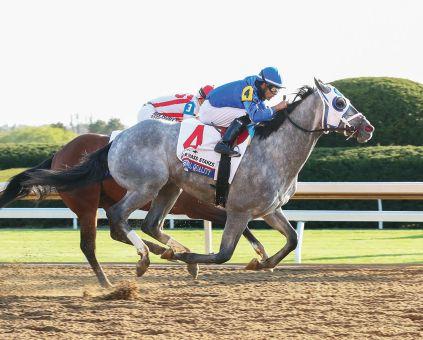
the roses of a runner-up fnish in the Blue Grass Stakes.
Te nine days between the Blue Grass and Derby continued to attract trainers of serious classic contenders. Te 1968 running launched another triple of a sort, in that each Blue Grass winner won one of the Triple Crown races. In the case of Calumet Farm’s Forward Pass, his Kentucky Derby was some years from ofcial as he fnished second to Dancer’s Image. Afer the apparent winner was disqualifed for testing positive for a forbidden medication, years of court cases ensued. Forward Pass won the Preakness as well and was eventually declared the Derby winner.
In 1969, Arts and Letters won the Blue Grass by an impressive 15 lengths. He then was second to unbeaten Majestic Prince in both the Derby and Preakness before defeating that rival in the Belmont Stakes. Arts and Letters was voted Horse of the Year as well as champion 3-year-old. Te next year, Dust Commander’s upset win in the Blue Grass sent him into the Derby still a relative longshot at 15-1, but he completed the double with a fve-length Derby score.

phrase “don’t squeeze the lemon dry” in discussing horses’ campaigns.
Northern Dancer went on to win the Preakness afer the Derby, but his Triple Crown bid in the Belmont was unsuccessful. He was voted the 3-year-old champion prior to launching a stallion career as one of the best of all time.
Te year afer Northern Dancer, Lucky Debonair won the Blue Grass prior to winning the Derby, completing the three straight seasons of the double. Again illustrating the importance of timing rather than purse, Blue Grass winning purses won by Chateaugay, Northern Dancer, and Lucky Debonair all were just under $20,000.
Important in the lore of the Blue Grass is the performance of Graustark in the race in 1966. Darby Dan Farm’s Ribot colt was so spectacular in all his races that greatness seemed within his destiny. In the Blue Grass, however, he was edged at the wire by Abe’s Hope and sustained a career-ending injury. Racing fans had a sense of being deprived. As for Darby Dan, the farm received the blessing of having another major stallion. Also, the next year the farm’s homebred Proud Clarion won
Two years later, the Blue Grass attracted Meadow Stable’s juvenile champion of the previous year, Riva Ridge, and trainer Lucien Laurin. Te race by then grossed $49,700, still well below the top Florida races. Riva Ridge won by four lengths, leading to a dominant Derby victory nine days later. Riva Ridge later won the Belmont Stakes but did not repeat as a champion. Te later-developing Key to the Mint won the 3-year-old title. (Te following year, Laurin took a diferent route with Meadow Stable’s Triple Crown winner Secretariat. Tat colt was prepped with three races in New York prior to the Derby.)
In 1973, the Toroughbred Owners and Breeders Association launched the grading of races. Te designation of grade 1 became important to racetracks and to owners of stallion prospects and broodmares. Te Blue Grass has been grade 1 for much of the past 50 years but not all of them. How those alterations afected its attraction in any given year is probably not major, again in comparison to how it was perceived as an ideal prep for the Derby.
Eventually, Keeneland management implemented huge increases in the winning purse of the Blue Grass. Honest Pleasure earned $73,027forwinningin1976,andthewinner’ssharetopped$100,000 in 1981. Subsequent milestones included topping $250,000 in 1991,


Embrace the lifestyle of unparalleled luxury at The Residences with 79 exquisite condominiums now available for purchase! Immerse yourself in a world of timeless elegance complemented by round-the-clock concierge, housekeeping, a spacious ftness center, in-room and on-site dining, and more. Discover the epitome of sophistication and secure your place in the heart of Saratoga Springs today.





$400,000 in 1996, and $600,000 in 2015. Te Blue Grass became a $1 million-added race in 2015. Of course, the other Derby prep races underwent manyfold increases, too.
A favorite Blue Grass among sentimentalists was the 1978 running. Lucille Markey, the former Mrs. Warren Wright and by then the owner of Calumet Farm, had the brilliant Alydar in the race. Keeneland chairman James E. (Ted) Bassett arranged for the aging Mrs. Markey and her husband to be driven to the outside rail of the stretch to get a close-up view of her star prior to his entering the gate. Alydar won easily but was runner-up in all three Triple Crown races to his archrival Afrmed.
Te next year, Spectacular Bid added to the list of horses that won the Blue Grass Stakes and the Kentucky Derby and reigned as 3-year-old champion. He became Horse of the Year as a 4-year-old.
Ten the pattern was interrupted. No Blue Grass winner won the Derby for a dozen years. However, in the interim Blue Grass starters Gato Del Sol and Alysheba won the Derby. During that era, the lure of the nine-day interval had given way to trainers wanting several weeks between races. In 1989, Keeneland heeded the new attitudes and changed the Blue Grass to an earlier date, three weeks before the Derby. Te next year, Summer Squall won the Blue Grass and Preakness, and Unbridled, the Blue Grass third-place fnisher, won the Derby.
In 2015, the gap between the Blue Grass and Derby was increased
to four weeks. Of course, Keeneland’s short meeting meant management did not have many weeks to deal with, and the earlier date put their race in confict with sundry other preps. Even though Hialeah and the Flamingo became phenomena of the past, the date change meant a crowded schedule. Indeed, one outcome is that the Wood Memorial, Santa Anita Derby, and Blue Grass Stakes have been run on the same day.
In 1991, Strike the Gold broke the 12-year drought of a Blue Grass winner also winning the Derby, but no other horse has achieved the double in the subsequent three decades-plus. Nevertheless, the Blue Grass has continued to be won by horses destined to prove themselves champions and/or distinguished winners in additional races. Two years afer Strike the Gold, Prairie Bayou won the Blue Grass prior to earning the Eclipse Award as 3-year-old champion; Sea Hero was fourth in that Blue Grass and then won the Derby. Te next year, 1994 Blue Grass winner Holy Bull went one step better, becoming Horse of the Year as well as division champion. In 1995, Tunder Gulch won the Derby, the Belmont, and the championship afer fnishing fourth in the Blue Grass. In 1996, Skip Away won both the Blue Grass and the 3-year-old title, and Blue Grass third fnisher Editor’s Note won the Belmont. At 5, Skip Away graduated to Horse of the Year.
Te patterns continued into the 21st century. For example, Street Sense was second in the Blue Grass before winning the Kentucky Derby, and Palace Malice was second in the Blue Grass and later won the Belmont.
Bringing the matter up to date, winners of the past six Blue Grass Stakes, sponsored since 1997 by Toyota, include:
• Good Magic, second to Triple Crown winner Justify in the Derby and sire of 2023 Kentucky Derby winner Mage;
• Art Collector, subsequent winner of the grade 1 Woodward and Pegasus World Cup. (Te flly Swiss Skydiver was second in Art Collector’s Blue Grass and later won the Preakness.);
• Zandon, third in the Derby and winner of the Woodward; and
• Essential Quality, later winner of both the Belmont Stakes and Travers Stakes and the 3-year-old champion of his crop.
Todd Pletcher is the leading trainer of Blue Grass Stakes winners with four, including Tapit Trice in 2023. He stressed the ongoing importance of the race.
“Te Blue Grass is one of the most popular races,” Pletcher said.
“With grade 1 status and the high purse, it is a stallion-making race in its own right. And, of course, being in the state of Kentucky, it is an ideal prep for the Derby. Te Blue Grass is a race that owners, breeders, trainers respect a great deal.” KM


EXCITING, SHARABLE SMALL PLATES. HAPPY HOUR. WEEKEND BRUNCH. PRIVATE EVENTS.











WE ARE POWERED BY COLLABORATION.

Nine collaborative counties. An educated workforce. A vibrant, entrepreneurial culture. You’ll fnd it all in GreaterLEX, a region of rare opportunity and exceptional experiences for innovators, dreamers and doers.
Build your business in GreaterLEX among the best this thriving region has to ofer. Learn more at LocateinLexington.com.
$600,000 Central Bank Ashland (G1)
3YO Fillies, 1 1/16 miles | $100,000 KTDF Contribution
$400,000 Transylvania (G3)
3YOs, 1 1/16 miles (turf) | $100,000 KTDF Contribution
$400,000 Lafayette 3YOs, 7 furlongs | $100,000 KTDF Contribution
$1 Million Toyota Blue Grass (G1)
3YOs, 1 1/8 miles | $150,000 KTDF Contribution
$600,000 Madison (G1)
4YOs & Up, F&M, 7 furlongs | $100,000 KTDF Contribution
$400,000 Appalachian (G2)
Presented by Japan Racing Association
3YO Fillies, 1 mile (turf) | $100,000 KTDF Contribution
$350,000 Shakertown (G2)
$600,000 Maker’s Mark Mile (G1)
4YOs & Up, 1 mile (turf) | $100,000 KTDF Contribution
$250,000 FanDuel Limestone (L)
3 YO fllies, 5 1/2 furlongs (turf) | $50,000 KTDF Contribution
$600,000 Jenny Wiley (G1)
4YOs & up, F&M, 1 1/16 miles (turf) | $100,000 KTDF Contribution
$400,000 Stonestreet Lexington (G3)
3YOs, 1 1/16 miles | $100,000 KTDF Contribution
$300,000 Giant’s Causeway (G3)
3YOs & up, F&M, 5 1/2 furlongs (turf)
$50,000 KTDF Contribution
$300,000 Baird Doubledogdare (G3)
4YOs & up, F&M, 1 1/16 miles | $50,000 KTDF Contribution

3YOs & up, 5 1/2 furlongs (turf)| $50,000 KTDF Contribution
$300,000 Commonwealth (G3)
4YOs & up, 7 furlongs | $50,000 KTDF Contribution
$400,000 Beaumont (G2)
Presented by Keeneland Select
3YO fllies, 7 furlongs & 184’ | $100,000 KTDF Contribution
$250,000 Palisades (L)
3YOs, 5 1/2 furlongs (turf) | $50,000 KTDF Contribution
$350,000 VisitLEX Elkhorn (G2)
4YOs & up, 1 1/2 miles (turf) | $50,000 KTDF Contribution
$300,000 Ben Ali (G3)
4YOs & up, 1 3/16 miles | $50,000 KTDF Contribution
$300,000 Bewitch (G3)
4YOs & up, F&M, 1 ½ miles (turf) | $50,000 KTDF Contribution
PURSES





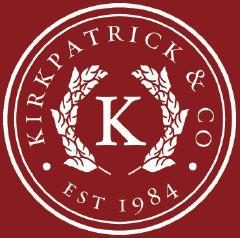
“I have the privilege of being a Kentuckian,” begins broker Zach Davis when asked to describe himself. That heritage, solidified by his ancestors more than twelve generations ago, forms the foundation for his life’s work. Zach
Childhood days spent wading in the waters of the Elkhorn attuned him to the beauty of the Bluegrass. The seasons were measured not in months but were marked by the rhythms of his family’s small thoroughbred operation.

Zach’s first job in real estate came early. One July, he assisted farm realtor/broker Kay Ledbetter by painting field & paddock gates in her farm’s signature colors, dragging a little red wagon full of supplies in the midsummer heat. He recalls the groundbreaking broker as “larger than life” and his own work as “probably subpar.” As a teen, he proved far more successful directing calls in a local real estate office (between stints at the Winn-Dixie cash register).
Ever industrious, Zach earned his real estate license shortly before entering Transylvania University. There, Zach pursued a degree in history, with a special interest in the Bluegrass’s historic architecture.
Zach gained vast experience studying his mentor, Kirkpatrick & Co. founder Arnold Kirkpatrick. Arnold understood that the purchase or sale of a property was not the end of a relationship, but a prelude. He treasured the friendships he built with clients, offering a unique blend of industry expertise and Bluegrass hospitality to individuals both local and international. Steeped in that tradition, Zach remains pleased to provide clients excellent – and gracious – representation.
Zach’s particular expertise includes horse farms, historic estates, crop & cattle land, as well as recreational properties. He is also pleased to consult regarding many aspects of farm ownership, including layout, staffing, construction & veterinary services, and conservation easements. Zach frequently works in concert with a client’s legal & financial teams, offering guidance for estates and trusts.



won 1964 en a and a career
Northern Dancer won the 1964 Blue Grass Stakes en route to a Kentucky Derby victory and a stallion career that transformed Keeneland’s sales and the international bloodstock market.
By Maryjean Wall
THE LITTLE HORSE who could” frustrated a lot of people early on. On some days, his handlers called him “a real devil.” On his worst days, invectives took a sharp turn into more unfattering territory, making him a horse “so short and so damned chunky that he was a real disappointment.”
Tat was in the beginning.
Northern Dancer learned to channel his Napoleon complex. He also learned to run, and 60 years ago he proved he really was “the little horse who could” when he won the Blue Grass Stakes at Keeneland. He also won the Kentucky Derby and the Preakness Stakes, nearly winning the Triple Crown. He won Canada’s premier event, the Queen’s Plate. Ten, at stud, the real magic happened. Te chunky little devil turned into a global
sensation — with the help of a baseball pitcher’s mound that he stood upon in the breeding shed. Te little guy was too short to reach his mares.
He was grazing in Maryland pastures when the most spectacular moment in yearling sales connected him to Keeneland a second time, 19 years following the Blue Grass Stakes. On the evening of July 19, 1983, his yearling son out of the mare My Bupers sold for an astonishing $10.2 million at the Keeneland July sale. Even before selling began, the sales pavilion lights could have been set aglow with all the electricity humming through the crowd. When the hammer fell, the moment was as memorable in the horse world as Neil Armstrong taking his giant leap for mankind on the moon.
For days leading up to the sale, everyone in Lexington had heard the talk about this one son among several by Northern Dancer. Gossip was cawing like a noisy crow throughout the city, gossip that portended a very high price. People not even connected to the sales drove to Keeneland to see the freworks when the anticipated bidding battle began. Spectators crammed into the aisle surrounding the pavilion, making it


impossible to move.
“It was total chaos; it was bumper-to-bumper people,” recalled Bill Greely, who was then Keeneland general manager and later president upon his retirement in 1999. Keeneland had contacted the Lexington Herald-Leader on the frst night of selling, asking the newspaper to print an advisory: Would the public please stay away so the crowds would thin. Te public didn’t get the message. Te public already was caught in the excitement and curiosity aroused by twin Boeing 747s parked nose to nose across from Keeneland at the airport. Long lines of trafc stopped alongside the highway as people ogled the aircraf, each with Arabic script and the Emirates fag painted on the fuselage.
Te twin jumbo jets struck the locals like something that had dropped in from outer space. It didn’t take long for the curious to discern the whereabouts of the passengers, and of to Keeneland everyone went. People were eager to watch the Maktoum family of Dubai go to war in bidding rounds with still more internationals, such as the Irish conglomerate of Robert Sangster, John Magnier, and Vincent O’Brien, with Sheikh Mohammed fying away as the new owner of the Northern Dancer—My Bupers colt, later named Snaaf Dancer.

His story is a long tale of what-ifs. As in, what if owner Edward Plunket Taylor of Windfelds Farm in Canada had taken trainer Horatio Luro’s advice and castrated Northern Dancer? Or, what if someone had purchased the colt for the predetermined $25,000 price attached to him in a Windfelds auction of yearlings? Or, fast-forwarding to later in the horse’s life, what if Windfelds had taken the $40 million ofer for NorthernDancerandsentthehorsetoFrance?Tat possibility probably would have negatively impactedtheKeenelandsalesandtheentireToroughbred business in the United States.
IT WAS TOTAL CHAOS; IT WAS BUMPER-TOBUMPER PEOPLE.”
—Former Keeneland president Bill Greely about the 1983 Keeneland July sale
Tose go-go auction days of the early 1980s might never be seen again in any sales ring. To witness Northern Dancer’s efect on the horse world was astonishing and all the more remarkable considering the ironies that had dogged his life.
Northern Dancer (by Nearctic out of Natalma) was just one among the gang of yearlings roaming Windfelds, outside Toronto in Oshawa, when he was prepared for Taylor’s annual September sale in 1962. Taylor had a well-earned reputation for turning novel ideas into practical solutions. At each sale he ofered his entire yearling crop at predetermined prices. People either paid his price for a horse or they went home without that horse. His intention was to raise the quality of Canada’s Toroughbred industry by making the best-bred youngsters available to all, rather than keeping them entirely for himself. Te sale always ended when half the crop had been sold. Taylor took home the remaining half to add to his racing stable. Northern Dancer went unsold at his $25,000 price. Taylor took him home.
Taylor came to racing as a beer and real estate baron. Almost single-handedly he bought up all the small tracks scattered throughout Ontario, shifed racing to the newly built Woodbine

and the aging Greenwood in Toronto under his newly formed Ontario Jockey Club, and turned around the sport in that province. A Toronto sports columnist, Dick Beddoes, wrote that Taylor was “large and ruddy and rich,” adding, “there is a notion widely held outside this country that he owns Canada.”
He did own a good part of Ontario. But horses do not always follow the map laid out for them, no matter how deep their owner’s pockets are, and Taylor must have been discouraged with the young Northern Dancer. For one thing, the colt stood a mere 14 hands when ofered for sale. Tis positioned the bay colt into pony territory: Equids are not considered horses unless they reach a minimum of 14.2 hands. Buyers want size in a prospective racehorse so that it will match strides or even exceed the stride of competitors. Northern Dancer looked discouragingly as though he might not have had what it would take to compete.
He grew two inches by the time he was racing, so he did, in fact, become a horse. But he always looked small and chunky when racing alongside other horses. Photos taken from the infeld when Northern Dancer neared the fnish of the Kentucky Derby show a much taller Hill Rise racing alongside him. But taller doesn’t always make a winner, as Northern Dancer was to prove time and again.
At age 2, Northern Dancer was still on Canadian soil when he went into training with T.P. “Peaches” Fleming. Te well-known horseman was an assistant trainer to Luro, but he also trained a

division of Windfelds horses in his own name. Under Fleming’s care and Luro’s occasional visits to Windfelds for a check on the progress of the young horses, Northern Dancer progressed, albeit slowly. His training did not always go smoothly.
He had a habit of biting people. He had a worse habit of dumping his riders, a habit he developed and polished on the farm before he ever got to the racetrack. Northern Dancer’s personality faws struck Luro as detrimental enough to raise the suggestion the horse be castrated. Taylor declined. Had the colt been gelded, the Toroughbred breed would have gone in an entirely diferent direction. Te prospect presented another what-if.
Te short guy wasn’t making fast friends at Windfelds. It was Windfelds’ racing manager, Joe Tomas, who called Northern

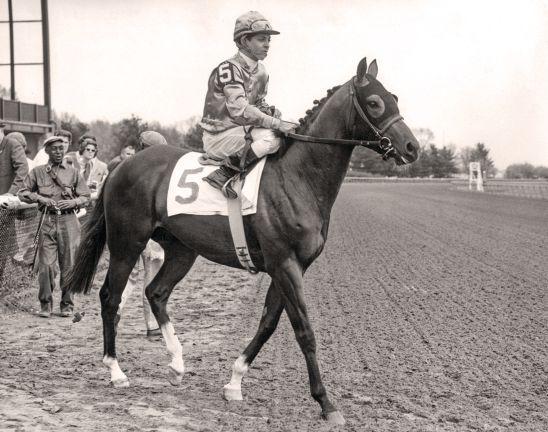

Dancer “so short and so damned chunky that he was a real disappointment,” as quoted by Avalyn Hunter in “Te Kingmaker: How Northern Dancer Founded a Racing Dynasty.” And there were more reasons not to become enamored with the young colt. Northern Dancer was overly sensitive to the whip. He didn’t like the whip any more than had his dam, Natalma.
Northern Dancer also had to overcome a skin problem. His condition is known as “cracked heels,” a sort of psoriasis that can lead to foot infections. Some horses are prone to this, as was Northern Dancer.
‘‘
IT WAS ONCE IN A LIFETIME. IT WAS KIND OF WONDERLAND.”
Te colt didn’t make things easier for anyone when Windfelds moved him to Fort Erie, a track in Canada, to begin his racing career. Hunter wrote about an important scheduled workout that went wrong as soon as he lef the gate. Northern Dancer bolted, meaning he lunged sideways, out of control. Te rider hadn’t touched him, but the starting bell had rung. Hunter theorized that the colt associated the starting bell in the gate with the whip applied to him a month earlier in training at the farm. Hunter wrote, “Had he thrown his rider in that frst wild burst of speed, or had the track been more crowded as the colt went careering down the straightaway, the results could have been lethal.”
What if. Te story of his life.
He raced nine times as a 2-year-old, winning seven of his races including the Remsen Stakes at Aqueduct, a key race at that time for 2-year-olds on their way to the Kentucky Derby. He fnished the season as Canada’s juvenile champion. But once again he was nursing foot problems. Tis time, the problem moved from his heels to the wall of one hoof where he sufered a “quarter crack.” Luro had him patched up, literally, with a farrier using a new procedure to apply a patch designed not to fall of and thus hold the hoof wall together. Luro sent Northern Dancer to his farm in Georgia to give the colt a rest and let the crack grow out. When the vacation ended, Northern Dancer was on his way to South Florida — where soon he won the Flamingo Stakes at Hialeah Park.
—Former Keeneland president Bill Greely
He was starting to fll out and look more like a horse. But although he turned 3 as do all Toroughbreds on Jan. 1, he was not chronologically a 3-year-old. His May 27 foaling date was a couple of months later than most foals. Northern Dancer’s late arrival never slowed him down, any more than his small size did. But these were talking points on his way to Churchill Downs when people wondered how he would fare, short in stature and a bit too young, on the frst Saturday in May.
Northern Dancer won his debut, a maiden race at Fort Erie.
His fnal stop prior to Louisville was Keeneland and the Blue Grass Stakes, which was then raced 10 days prior to the Derby. Luro was pleased with Northern Dancer’s relaxed manner as he



waited for Blue Grass Stakes day; Luro always said that the green grass and late spring weather horses experienced at Keeneland afer a Florida winter were keys to sending them on to Louisville in the best racing shape.
One diference to Northern Dancer’s experience in Lexington was his new rider for the Blue Grass Stakes. Bill Shoemaker, who rode him in Florida, chose to ride Hill Rise in the Derby. Te Blue Grass was to be a trial run for Bill Hartack on the Canadian colt.
Hartack was a brilliant rider but with a style completely opposite that of Shoemaker’s. While “the Shoe” tended to ride “chilly” on his horses, hardly moving at all in the saddle, Hartack’s style was to push his horses faster and farther with a strong pump-


ing action that was no more subtle than a jackhammer. He was an aggressive rider. Te choice of Hartack for the Blue Grass and Derby turned into a controversial point that was highly debated in the news media. But people were forgetting Hartack was already a three-time Derby winner and none of his winners had been the race favorite. He could pull a rabbit out of a hat.
Northern Dancer was winning for the ffh consecutive time when he took the Blue Grass Stakes by half a length over Allen Adair. “Northern Dancer is small,” Hartack said following the race,

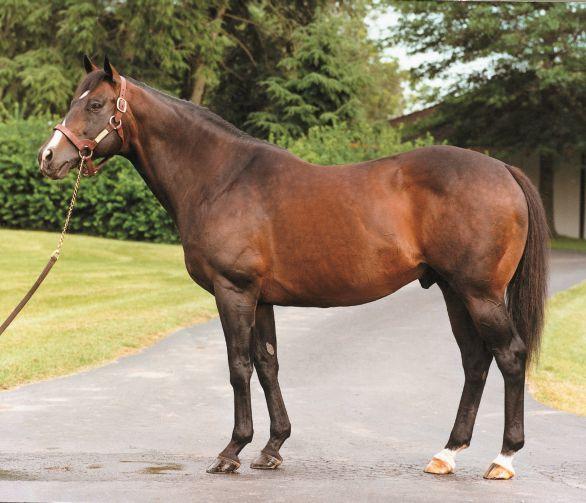


“but he has a lot of run and a lot of guts. Tis was just a workout for this horse.” In other words, the jockey and horse hinted in the running of that Blue Grass Stakes that they would get along just fne in the Derby.
Te Derby did, in fact, turn into a two-horse race. Hartack drove Northern Dancer through a hole and outran Hill Rise through the fnal yards, winning by a neck. Some said the Canadian colt won by a head — not his head but Hartack’s.
“Hartack won this one with a heady ride and a pair of eyeballs that had to be swiveling atop his head like the red blinker on the roof of a police car,” observed United Press International. Te writer’s comment mirrored Hartack’s post-race summary: “I kept an eye on Mr. Brick and Te Scoundrel, who seemed to be



1) Danzig raced briefy but had an enduring impact at stud; 2) Nijinsky II won the English Triple Crown and sired his share of winners; 3) English classic winner Sadler’s Wells had an outstanding stallion career in Europe;
4) grandson Storm Cat was a leading U.S. sire; and 5 and
6) Nureyev as a stallion and as a Keeneland sales yearling
running the best in front of us. But I also kept an eye on Hill Rise behind us.”
Hartack kept the news media waiting for more than an hour before giving his post-race Derby summary. He spent that time giving autographs to the fans. Te jockey was an irascible sort who thought sportswriters stupid and ofen said so. He knew he was challenging newspaper deadlines when he took his time showing up for questions, but he didn’t care. When he did make himself available, he was scowling. Before turning around to speak to the press, he stalled some more. He combed his hair. He had his valet remove his boots. And then, he announced as Toronto’s Globe and Mail reported, “It’s an absolute pleasure to sign autographs. It’s much better than talking to the press.”
It was one more memorable moment in the Northern Dancer story.
Te Derby had attracted numerous Canadians to Churchill Downs, and many thousands more watched at home in Canada on black-andwhite television sets. Tey were shouting and jumping up and down deliriously as the little horse set a track and stakes record of 2:00 for 11⁄4 miles. In their minds, Northern Dancer was as Canadian as maple syrup, a sports hero who gave that nation something to be proud of when it would not even have its own fag until a year later. Northern Dancer, along with the red maple leaf fag, were the two greatest things to happen to Canada in the 1960s. In recognition, the little horse was the frst nonhuman inducted into the Canadian Sports Hall of Fame.


Winning the Preakness set up Northern Dancer for a potential Triple Crown. But it was not to be. He fnished third in the Belmont Stakes (Quadrangle won the race) and was showing signs of a tendon injury following the Belmont Stakes. He ran one more time, winning the Queen’s Plate at Woodbine. He never raced again.
In Toronto, the city council asked Windfelds if the horse could be paraded along a downtown street; Windfelds politely and wisely declined.
Te horse’s stud career was now the main concern. Taylor received a tempting ofer to syndicate Northern Dancer for more than $1 million and stand him at stud in the United States. He chose to keep him in Canada, where Taylor was still all about improving Canadian racing and breeding. Te initial stud fee was $10,000. No one could foresee where the stud fee would go in a few more years.
Four years following the horse’s retirement, Taylor relented on relocating Northern Dancer. Windfelds established an American division in Maryland and moved Northern Dancer to the new farm. He spent the remainder of his life in Maryland; following his death in 1990 at age 29 his body was sent home to Canada for burial at the main portion of Windfelds. His stud fee had risen far from the original $10,000. It went
to $500,000 without a live foal guaranteed, then later was said to reach $1 million in private deals. In 1981, when the horse was 20 years old, Windfelds turned down an astronomical $40 million ofer from France to buy Northern Dancer. Te horse remained in Maryland pastures, even as his ofspring were dominating American and European racing and breeding operations.
One son, Nijinsky II, was an English Triple Crown winner in 1970 and that country’s Horse of the Year. Another son, Nureyev, was leading sire in France and leading broodmare sire in Great Britain and Ireland. Nureyev produced American champions Teatrical and Miesque and European star Peintre Celebre. Another Northern Dancer son, Sadler’s Wells, was an English classic winner and stallion sensation in his own right.
Northern Dancer’s long list of high-quality ofspring has flled several biographies. And his name has continued into subsequent generations. One grandson, Storm Cat, whose ofspring were highly sought, turned into one of America’s top sires.
In all, Northern Dancer sired 635 foals, among them 146 stakes winners and 26 champions. He remains a vibrant infuence in contemporary pedigrees through his male descendants.
Back in Kentucky, Keeneland’s Bill Greely has memories of Hartack maneuvering the colt to get to the front in the 1964 Kentucky Derby feld. Greely was a patrol judge at Churchill Downs, high in his perch near the quarter pole, and saw Hartack send the colt through the hole “right in front of me.”
Tis became a special memory to treasure, the little horse who knew he could, stampeding through a hole and holding of the much taller Hill Rise. All the while, he was responding willingly to Hartack’s furious bouncing up and down in the saddle, reminding the colt that this race was the real business.
And then were the special memories formed years later at the Keeneland sales where Northern Dancer was the center of attention once more: “I don’t see it happening again,” Greely said. “It was once in a lifetime. It was a kind of wonderland.” KM










From foal to finish, our team is on board every step of the way





Unlock the craft, history, & heritage of Castle & Key.
Please drink responsibly.
With its bustling Main Street, strong business base, and numerous tourist attractions, Georgetown is enjoying an economic boom
By Jacalyn CarfagnoPhotos
Arden Barnes
Restaurants, boutiques, and other businesses draw locals and tourists alike to historic downtown Georgetown.


Te town, 10 miles north of Lexington, still draws water from the spring that Native Americans discovered thousands of years ago and European settlers used. It’s still astride a nexus of major transportation routesasitwasin1783whenGreatCrossingwassettledjustafewmiles down the road at the intersection of a bison trail and Elkhorn Creek.
And, for all the wonders and challenges of rapid growth, international commerce, modern manufacturing, and world travel, Georgetown is still a place with a thriving Main Street where people know and seem to like each other.
John Stephen Hockensmith, a photographer and arts entrepreneur who has had a business on Main Street since 1982, said Scott County and its county seat of Georgetown, with its beautiful, towering 1877 courthouse, sit in a sweet spot both geographically and culturally. Located near the juncture of interstates 75 and 64, Georgetown is within the “golden triangle” of Louisville, Lexington, and Cincinnati
and on the Bourbon Trail. Hockensmith says Georgetown is close to everything the larger cities have to ofer but “with a little more hometown mystique.”
Tat mystique has endured as Georgetown and Scott County have undergone tremendous growth and signifcant changes. In 1986 Toyota broke ground in Georgetown on the manufacturing plant that has become its largest in the world, employing almost 10,000 people and producing over half a million vehicles and even more automotive engines annually. Toyota has 120 parts suppliers in Kentucky, many of them close by, accounting for even more good manufacturing jobs in the region.
People followed the jobs. Scott County’s 1980 census recorded 21,813 residents, a number that grew to 59,886 in 2023, a stunning 175% increase. Prosperity came with the growth. Te 2021 median household income in Scott County was $73,113 compared to $55,454 for the state as a whole, while poverty in Scott was 10.2% compared to 16.3% statewide.
Te twin allures of a robust, modern economy and a welcoming historic downtown also add to Georgetown/Scott County’s appeal to visitors.
“Georgetown has this interesting double personality thing going on,” explained Lori Saunders, executive director of the Georgetown/
Scott County Tourism Commission. On one side, there’s the “super high-tech” Toyota plant she describes as “a symbol of tech and economic power.” On the other, Saunders notes, is the historic downtown, “a buzzing hub for culture and business that attracts tourists and locals.”
Tousands of people come for the many diverse events Georgetown/Scott County hosts annually. Since 1980 the fall Festival of the Horse has celebrated the equine culture of the Bluegrass with parades, music, contests, lots of food, and, of course, horses, attracting over 33,000 people last year. With a nod to a diferent form of transportation, the annual Horsey Hundred on Memorial Day weekend, draws thousands of cyclists from around the country and the world to ride the region’s scenic roads. Events more likely to draw locals, like Juneteenth and the Kite Festival, add to the busy calendar. About 20,000 visitors come year-round to visit Old Friends Toroughbred Retirement Farm. Equine enthusiasts also use Georgetown as a base to attend the meets at Keeneland and events at the nearby Kentucky Horse Park,

John Stephen Hockensmith, who owns Fine Arts Editions Gallery & Press, extolls Georgetown’s “hometown mystique.”






from the Land Rover Kentucky Tree-Day Event to Breyerfest and the holiday spectacle Southern Lights.
It all adds up. Tourism ofcials fgure that in 2022, the most recent year for which numbers are available, visitors poured a record $171.71 million into the local economy, supporting 1,215 jobs and contributing $13.5 million to local tax cofers. Saunders’ staf — three full-time and

one part-time employees plus an intern (“we live, work, eat, breathe, shop, and sleep in Georgetown,” she says) — promote the area through print and digital media, attracting infuencers to visit, and attend motor coach shows to gain a place for Georgetown on itineraries. Te outreach has paid of not only with the numbers mentioned above but also with recognition in both Forbes magazine and Southern Living last year.
Visitors — whether from another country or a neighboring county — fnd an array of restaurant choices when they arrive. Tey can choose among Georgetown institutions like Galvin’s and Fava’s as well as the relatively new and much-lauded farm-to-table Local Feed plus Japanese, Latino, Tai, and other cuisines.
And if anyone is thirsty, no problem. Country Boy Brewing, one of the frst craf brewers to set up shop in the state, has its headquarters, production facility, and a taproom in the Lanes Run Business Park. Soon, Blue Run Spirits, a boutique bourbon producer recently purchased by international beverage giant Molson Coors, will be a neighbor. Next year Blue Run plans to move into a $51 million distillery/rick room/visitors center designed by the frm responsible for Google’s headquarters. Te name Blue Run comes from Royal Spring, the source that’s provided water for eons, because that’s what one of the founders, a Scott County native, called the spring when he was a kid.
Bourbon has been part of Georgetown’s history almost since Elijah

A walkable downtown makes Georgetown inviting.
Country Boy Brewing has its headquarters, production facility, and a taproom in the Lanes Run Business Park.


1789

bourbon
distilled. Craig didn’t waste time; he also built grist and paper mills and founded the frst Baptist college west of the Alleghenies (as Georgetown/Scott County Tourism notes, “probably one of the very few with ties to bourbon”).
If Craig’s name seems familiar, it’s because Elijah Craig small batch bourbons have been produced and sold by Bardstown-based Heaven Hill since the 1980s, winning many awards along the way.
None of this success surprises Michael Blowen, who founded Old Friends. “It’s certainly better economically; it’s certainly better in terms of its sophistication,” he said, joking that in early days he and his wife,


Daniel Harrison is a country boy. Born in Sadieville, Kentucky, he went to Georgetown College, worked at Galvin’s restaurant downtown, and now lives and works in Georgetown. “I never was one of those kids who wanted to leave,” Harrison said.
Actually, he was one of those kids who wanted to come back. After getting a graduate degree at the University of Kentucky’s Patterson School of Diplomacy and International Commerce, living and working in Japan for three years, and meeting his Japanese wife, he did just that.
Back in Scott County, Harrison and his partners decided to apply the craft-brewing skills they’d learned in Tahara, Japan, to create Country Boy, a craft brewery.The frst year, 2012, they produced 504 barrels of their beers, a number that jumped to just under 24,000 barrels last year.
“It’s pretty crazy,” Harrison (known by almost everyone as D.H.) said as he showed visitors around the huge plant Country Boy opened in Georgetown’s Lanes Run Business Park in 2017. It’s the largest brewery in the state, although there are some that produce more beer.



Country Boy started in Lexington because Scott County wasn’t fully “wet” in 2012. But when it came time to build a new, larger operation, Georgetown had changed its laws and worked hard to bring the business home. Local leaders “were extremely willing to bend over backward to work with us in any way to get us to come to this community,” Harrison said.They didn’t bend any rules, he said, but were “very intentional” in making sure everything went smoothly. Breweries in other communities “are very jealous of how
supportive Georgetown was.”
Still, it wasn’t clear the location was going to be a winner.The business park is on the edge of Georgetown, and over a decade ago Country Boy’s only neighbors were a day care and a community college. But on opening weekend the taproom “was absolutely packed,” Harrison said.
The community stepped up during the COVID-19 shutdown, too, he said, ordering takeout over and over. “They had to be at least tired of the food, tired of the beer, but they supported us so much.”
It’s that kind of thing that makes Harrison say, “There’s a lot of nonmonetary beneft that I get operating a business in my hometown.”
The hometown thing was important when Country Boy discovered that a racehorse with the same name as one its signature brews — Cougar Bait — was nearing the end of his unimpressive career with poor prospects for a happy retirement. (In the Louisiana-bred gelding’s last career run in 2018 he fnished seventh in an eight-horse feld at Evangeline Downs.)
The Country Boy crew was willing to buy him, but he needed a home. So, Harrison turned to his friend Michael Blowen, a regular at Country Boy who founded Old FriendsThoroughbred Retirement Farm. “Would you take him?” Harrison asked and the answer was “yes.” So now Cougar Bait grazes in a paddock just a few miles from the brewery that adopted him.
It’s the kind of story that affrms Harrison’s decision to live and work where he grew up. “I’ve seen a lot, I’ve lived abroad for a long time, but I always knew I wanted to come back.”



Diane White, worried they would have to eat at chain restaurants “for our entire lives.”
Blowen and his wife moved to Kentucky in the 1990s from their home in Harvard Square in Massachusetts and landed in Georgetown in 2003. “I was always stunned by the beauty of this place,” said Blowen, a former flm critic for the Boston Globe. Although an outsider, a guy with an accent who did not grow up anywhere near Scott County, he’s found a warm reception. “Tere’s a kindness in Georgetown that I really like,” he said.

He believes that supersedes political or other disagreements when something needs to get done for the area. “Ideology goes out the window, and they just go, ‘OK, what’s good for the county.’”

Old Friends founder Michael Blowen and his wife, Diane White, appreciate the amenities growth has brought to Georgetown.
Saunders, who has lived in Georgetown 34 years, agreed that the community pulls together when the chips are down. When Toyota came, bringing “chances and challenges,” she said, “the locals didn’t just sit back — they upgraded the whole scenewithimprovedinfrastructure,better schools, and health care.”
But decision-makers were careful to preserve what Hockensmith calls Georgetown’s “mystique.”
Said Saunders: “Our community has worked hard to fnd the perfect balance between tradition and progress.”
Progress sometimes comes in the form of people who bring new ideas — such as a retirement home for Toroughbreds — and Blowen said he believes the community encourages those, like himself,

who want to develop new ideas into new ventures. “Here, it seems like people say, ‘Yeah, you should try that.’ ”
Among the people who have tried and succeededareAshleyandMattNunn,who opened Slainte Public House in 2016. Te two had visited Ireland not long before, focusing not on tourist destinations but on local pubs, Ashley said. Tey thought it would be great to bring that kind of community gathering place to their adopted hometown.
Georgetown had only recently gone from “moist” to “wet,” making way for a true bar or pub that served drinks but not food. “We were the frst bar in Georgetown since Prohibition,” she said. People didn’t know quite what to make of this new type of business, but “they were open to the idea and supportive.”

Keeneland and Country Boy Brewing have a longstanding partnership to produce Keeneland Ale, which is available around Kentucky and is sold at the track during the spring and fall race meets. Country Boy Brewing, Kentucky Eagle, and other distributor partners donate $1 per case to Blue Grass Farms Charities (BGFC) to support its Back-to-School Backpack Program, which provides school supplies for nearly 1,000 children whose parents work in Keeneland’s stable area and on Central Kentucky farms.
With that support Slainte has thrived, welcoming regulars who come in to relaxinthehomelikesetting,playWednesday night trivia, jam with local musicians on Mondays, or enjoy live music on the weekends. Like the Irish pubs they loved, Ashley said, Slainte has become a meeting place where locals celebrate or mourn or simply get together. “We’ve become a part of people’s stories,” she said.
It’s that kind of connection that makes Georgetown what Hockensmith calls “the thumpin’ heart of Scott County.”
For decades as a photographer, Hockensmith has traveled the country and the world. Tese days he’s ofen on the road to Lexington, where he’s opening a second gallery. He likes going places, he said, but even more he likes coming home. “I’m always happy to get back to this pace.” KM



4347 Shelby Lane
$3,900,000
164 prime Fayette County acres neighboring Juddmonte and Overbrook Farms. The farm features 50 stalls in 3 barns, an outdoor riding arena, a 20m x 60m covered dressage arena, and plenty of pasture space. The main residence, built in 1922, features a frst foor primary bedroom suite, heart of pine fooring throughout, and 4 upstairs bedrooms. There is also a 2 BR/2 BA cottage and a 3 bedroom manufactured home.

351 Spears Mill Rd
$865,000
36+/- acres in Bourbon County. Proposed division in one tract with 1,200 +/- feet of road frontage. Property includes a 3 BR 1 BA house sold “as-is” to completely renovate, a converted 18 stall tobacco barn for horses with wash stall and storage room. Attached open side shed for equipment/storage, 18 paddocks including 16 with small run in sheds, automatic waterers, 3 pastures.

246 Montague Lane Call for New Price
Nearly 61 gently rolling acres with beautiful elevations in western Woodford County. This property is well groomed and includes good cattle fencing as well as a cattle working paddock. The well situated barn with apartment is in grea s very comfortable accommodations. The attached barn area has a large overhead door, concrete foor and measures 40×42 with additional tall shed attached for vehicle parking or storage.

605 Delaney Ferry
$1,795,000
This 128 acre property is elevated above neighboring pr s a charming view of the surrounding Bluegrass. Improvements include a new 620sqft quality built manufactured home, and 2 tobacco barns, one of which has 12 concrete block stalls in fair condition. This is a very unique opportunity with tremendous potential.

130 Lighthouse Way Call for Price
Unique opportunity! Over 5,000sqft home on 2.38 +/- acres in Fishers Mill Landing, this 5 BR 4 1/2BA home has ample living space and is just 5 minutes from downtown Midway and I-64. *Open kitchen & family room concept *Formal dining arage Call today for your private showing!



5173 Briar Hill Road Call for New Price
Wonderful 10 acres located in Fayette County! Ranch home features open living room and kitchen, 3 bedrooms each with their own full bath. Quiet and quaint screened in porch with an in-ground pool for those hot summer days. The 6 stall barn is ready for your horses to call home with 2 paddocks and large feld all with automatic waterers. Property has had all fescue removed and pastures re-seeded. Just 2 miles from the interstate.





Beautiful and functional Chanteclair Farm consists of 260 acres of the fnest quality soils in Kentucky, this property is a turn-key opportunity to any discerning horseman. Amenities include 9 large plank fenced felds, 19 paddocks, 18 stall broodmare barn, 18 stall yearling barn, 6 horse equiciser, 60ft round pen, yearling show area, large hay and bedding storage barn, and large run in shed with catch paddock and spring water to the entire farm. Beautiful topography, miles of plank fencing, asphalt roadways esidence and two brick employee houses. Near Lane’s End, Airdrie and Clearsky Farms. Call for New Price!


Tom Biederman
Broker/Auctioneer
(859) 312-0606
(859) 277-2030
Mark Dixon (859) 552-5742
Lesley Ward (859) 361-3246
Westin Osborn (704) 975-4195
Maziar Torabi (859) 327-5496




Aiken Place is a fully turn-key 112 acre horse farm that includes 52 stalls in 4 wonderful barns, 3 plank fenced large felds, 8 paddocks, 3 employee or guest houses and The Col. John Steele House circa 1820 (renovation needed). Farm amenities include a large maintenance area with 3 bay shop and hay storage area, automatic waterers in all felds and paddocks, asphalt roadways and 3 gated entrances. Properties are adjacent and may be purchased together. Call for New Price!
Beth Ann Heiner (502) 324-7474
Stephanie Jones-Nouvellet (859) 512-8812
Hunter McKinney (615) 618-7434
Melanie Peterson-Ramey (561) 870-6587
BiedermanRealEstate.com
Kyle Fannin (859) 699-1196
Missy Maclin (859) 948-0201
Chris Allen (859) 951-2051
Lisa Frederico (859) 229-3794
The Arboretum, State Botanical Garden of Kentucky, offers a multitude of seasonal nature programs at its Kentucky Children’s Garden, including Let’s Plant a Seed.


Lexington offers an abundance of places to enjoy the natural world and outdoor educational opportunities
Story and
Story and photos by Rena
Baer
Each month Lexington resident Stephanie Baker takes her three young children to nature activities at Te Arboretum, State Botanical Garden of Kentucky or to one of the many programs ofered by the city’s Parks and Recreation department.
Whether it’s learning how to tell a Cooper’s hawk from a red-tailed hawk, identifying the leaves and characteristics of specifc trees, or becoming more familiar with native species, both plant and animal, Lexington ofers a multitude of opportunities for people of all ages to convene with nature. Tese opportunities come in the form of organized walks, classes, feld activities, hikes, hands-on play, arts and crafs, events, and volunteering. Tey can also be self-guided, such as Te Arboretum’s Walk Across Kentucky or a solo bird-watching outing.
“I see these activities and get inspired by new ways I can engage with my kids or a new activity we can do at home,” said Baker. “And then when we’re reading a book, I can say, ‘Oh, do you remember when we did this?’ So it enriches our home life too. It pours into me as a parent as I’m trying to teach my kids by providing

Many opportunities are available through LFUCG’s Parks and Recreation and The Arboretum to learn about pollinators, such as monarch butterfies.
them opportunities to go to these programs but also inspires us for things we can do at home.”
Te kids love it and are learning all kinds of lessons, she said.
“Tey know what goes in the recycling bin;

they know what goes in the compost bin,” she said. “We have a garden, and we had chickens for a little bit, and we compost. And so they do a lot of that at home too. But it’s really great when that’s reinforced in our city because they see it’s really a community efort. As we’re engaging with nature, we learn about taking care of our planet. It’s their inheritance.”
Last year, LFUCG Parks and Recreation ofered more than 100 outdoor programs,
drawing in almost 1,200 participants from May until December.
Superintendent of Natural Areas Jennifer Hubbard-Sánchez said Parks and Rec has ramped up its nature programming the past few years, focusing on things that people fnd applicable in their lives.
“We’ve defnitely added a signifcant number of programs over the past few years, as well as tried to change the focus of the programs so that people not only come away with new knowledge but hopefully also a call to action,” she said.

One popular annual event that has been added is Monarch Fest, which teaches the importance of butterfies and other pollinators and is usually held the third week of September.
“We started it three years ago at Raven Run, and it truly is a celebration of monarchs and all things pollinators,” said Hubbard-Sánchez. “Staf will go out and fnd lots of diferent butterfies, and we put them in the tent that morning, so you can walk in and they’ll just land on you and fy all over. And it’s a really neat way for people



to learn about and experience pollinators, especially monarchs. Tey get seed packets, native seeds, milkweed — things that they can plant at home.”
As Hubbard-Sánchez likes to remind people, they don’t have to venture out to Raven Run in southern Fayette County to get their nature fx. Lexington has more than 105 parks throughout the city, including three natural areas (Raven Run, McConnell Springs, and Hisle Park), which are areas relatively undisturbed by human activity. Jacobson Park, the city’s largest and most utilized park, is on a city reservoir. More than 200 bird species have been spotted there, making it popular for birding programs and photography.
“We’ve got parks pretty much within a fve-minute drive from anywhere you live in the city,” she said. “And I think it’s just really important that people know this is their resource, and it’s something that can lead to healthier, happier lives.”
Te main goal in the city’s wide-ranging outdoor programming is to build stronger connections with the natural world, continued Hubbard-Sánchez. “And that could be learning about tree ID through leaves. It could be learn-to-hike, learn-tocamp types of programs to teach how we’re connected to the natural environment and to understand that we can impact nature in both positive and negative ways.”
Most of the programs are taught by staf, many of whom have been in their jobs for years and are skilled in particular areas. “Some people really like leading the Owl Prowls, for example, where we take folks out and we call the owls and teach about owls and their habitat. Ten they actually get to
hear and hopefully see owls out in the parks. Other people really like pollinators and butterfies, and so we look at what staf is really good at and then let them take it from there.”
In addition to nature programs, outdoor volunteer opportunities range from participating in park cleanups to helping staf with programs and special events to removing invasive plant species.
‘‘ AS WE ENGAGE WITH NATURE, WE LEARN ABOUT TAKING CARE OF OUR PLANET.”
— STEPHANIE WALKER, A LEXINGTON RESIDENT AND MOTHER OF THREE
“I think some people show up because they need volunteer hours,” said Hubbard-Sánchez. “Tey may come on just one Friday in October to McConnell Springs and they get their hours in and they’re done. But a lot people are repeat customers because they not only enjoy the volunteer aspect, but they really like what they learn along the way. When you’re cutting honeysuckle, you’re learning all about invasive species, how to tackle them, how to treat them. Tat’s a perk of volunteering; they walk away with the ability to do the same thing in their own backyards.
“Central Kentucky is flled with

invasive species, and for the general public to be able to identify them and to be able to help us to tackle that, not only does it help us in the environment, but I think it also gives folks a sense of accomplishment and a sense of ownership.”
Overall, the message Hubbard-Sánchez likes to get out is that the parks are for all to enjoy.
“If you’re just going for a walk, if you’re working with a volunteer group, whatever that may be, there’s something in our Parks and Recre-
ation system for everyone,” said Hubbard-Sánchez. “It’s just a matter of reaching out and asking what’s there and fnding out how to get involved.”
More than a pretty place to walk or run, Te Arboretum, on the University of Kentucky campus, isn’t so much about the trails themselves but what surrounds them.
“Our mission is to showcase

Kentucky’s landscapes, and we serve as a resource for environmental and horticultural education, research, and conservation,” said Molly Davis, director of Te Arboretum. “What this means is we are a place where visitors can learn both about plants native to the state and ornamental horticulture, with a focus on plants that perform well in Kentucky’s growing conditions.”
Te Walk Across Kentucky pathway takes visitors on a self-guided tour over 65 acres that includes plant species from the seven distinct physiographic regions of the state.





“It’s a common misperception that the path is the Walk Across Kentucky, but it is the plant collection that is the Walk Across Kentucky, and the path goes through it,” said Davis.
And if visitors look closely, they’ll notice species native to Kentucky have been tagged and identifed.
“We ‘wild collect,’ meaning we get permission from publicly and privately owned land to go out into the feld, fnd a plant, and either take the seed then, or we might mark it to bring back later in the year; this is considered ex situ conservation, meaning the plants are preserved in a location outside of where they naturally occur,” said Davis. “If something happens out in that part of the state, such as some kind of disaster, we have the same plants that grew there, so we can help people grow back their plant community if needed.”
In addition, visitors can also learn about other plants that will thrive in their yards
For more information about nature programming opportunities, go to these websites (both sites include links to sign up for e-newsletters): The Arboretum, State Botanical Garden of Kentucky: https://arboretum.ca.uky.edu/ LFUCG: https://www.lexingtonky. gov/departments/parks-recreation
and gardens through Te Arboretum’s multitude of ornamental gardens and displays.
Te other primary features of Te Arboretum are its Kentucky Children’s Garden and Te Arboretum Woods. Te Arboretum Woods is a 15-acre remnant inner bluegrass woodland, an imperiled plant community in Kentucky that contains more than 90 species of native plants, “which
means it hasn’t been actively managed in about 300 years,” said Davis.
Te Arboretum returned from the impacts of COVID-19 by ofering more adult nature education opportunities this year, using both volunteer experts and arboretum staf to lead programs on subjects such as native plants, ornamental horticulture, and tree identifcation, as well as bird walks.
“We started having monthly bird walks in 2023, and they have proven extremely popular,” said Davis.
Because the two-acre Kentucky Children’s Garden has a dedicated educational staf, Te Arboretum can provide regular seasonal programming for children and their families. From the beginning of April until the end of October, Wednesdays through Saturdays from 10 a.m. until noon, kids can enjoy diferent guided educational activities tied to nature. One such perennial program is Let’s Plant a Seed.
“And it’s not just planting a seed for the




sake of planting a seed,” said Davis. “It can have all kinds of lessons with it, such as learning how food comes from seeds, what you have to do to make sure that the seed germinates and grows, and what natural things make an impact, such as soil, water, and sun.”
Many of the programs are aligned with the seasons and are included in the $4 admission (children under 2 get in free, and seasonal passes can also be purchased).
“In the summer, our stream is really pop-
ular because it’s hot outside,” continued Davis. “We will talk about animals that might build dams in streams and what happens then. We might also talk about how plants produce their fowers in summer, which leads to seeds in the fall. We might focus on the change in leaf color or the phenology of leaves ... So it really kind of depends upon the season, but everything is geared toward the natural cycle of what plants and soil and earth are all doing [at that time].”
Last year, the children’s garden was award-

ed a $10,000 grant from the MacAdam Early Childhood Education and Literacy Fund at Blue Grass Community Foundation. Te grant was used to procure programming supplies and to help support the education coordinator’s salary. Tanks to the establishment of a new Nature and Learning Endowment from generous donors, Davis said she hopes to increase equitable access to the gardenbyprovidingfeldtripopportunitiesto local elementary schools with a higher number of low-income students.
The Arboretum, State Botanical Garden of Kentucky is in the midst of a fundraising campaign to expand and renovate the Dorotha Smith OattsVisitor Center and give it a more noticeable presence, provide additional space (both indoor and outdoor) for educational programming, and make more effcient use of
its current space.
The overall fundraising goal is $3.5 million, and the campaign has raised almost $3 million of that.
“We had some exciting news before the holiday break that, based on where we’re at currently with funding, we can proceed with the architecture frm further developing


“Already, Te Arboretum hosts hundreds of children for grade-level feld trips, and we hope to accommodate more Title I schools in the future,” she said.
In all, the Kentucky Children’s Garden hosted a record 17,219 visitors over the age of 2 during the past fscal year.
As a partnership between LFUCG and the University of Kentucky, Te Arboretum, of course, is also used as a resource for UK students, whether it’s hands-on learning connected to classes or paid
their design plans,” said DavidTimoney, a senior institutional philanthropy offcer at the University of Kentucky.
The donations, as of January, have been made up of almost 700 individual gifts.
“That is incredible, and it shows how passionate people are aboutThe Arboretum as a whole,” saidTimoney. “One of the many features that we’re excited about is, due to the generosity of some of those donors, a suite of four stained glass windows was commissioned and will be installed in the renovated visitor center.”
internships. “We seek students from majors and programs, including early childhood education, horticulture, landscape architecture, Natural Resources and Environmental Studies, forestry, etc., for our Kentucky Children’s Garden and Walk Across Kentucky internships,” said Davis. “Interns have told us they gain valuable insights into what is involved with operating and maintaining a public garden, a children’s garden or a managed natural area.”
Davis said having all these components
Each stained-glass window will depict one of Kentucky’s seven physiographic regions.
“What I am trying to do is create this living tapestry of biodiversity, highlighting the treasures of nature in Kentucky, which are incredibly diverse,” said artist Laura Mentor in a video about the project.
The Arboretum director Molly Davis said that when the renovation is completed, she hopes the visitor center will have a much more noticeable presence from the parking lot, drawing in more people, and that it’ll have
in Te Arboretum helps defne it as a public garden.
“I hope that we’ve set a standard for what people expect here who are familiar with this public garden when they go to other places,” said Davis. “My wish is that visitors just become more knowledgeable about plants and all they do for our environment, and for us as individuals and a collective community, and that we have set aside this 100 acres for all to enjoy. Tat’s really an important message, I think.” KM
the capacity to host regional and local educational programming and events. Currently, the lack of space limits programming and the ability to hold larger gatherings.
“We get many inquiries about having different kinds of art displays, fower shows, and other events, and we simply haven’t had the room to host those,” she said. “But we have hopes to change this with the completion of the renovation and expansion project.”
To donate, visit https://uky.networkforgood. com/causes/5050-arboretum-center-fund

















































Family-owned LIMEWATER BISTRO + BAR has found a perfect ft in Frankfort’s venerable Glen Willis House
By Patti NickellPhotos by Mark
Mahan


Diners enjoy artfully prepared meals in a stylish setting at Limewater Bistro + Bar.
that sits majestically against a backdrop of the Kentucky River in Frankfort looks as if it might have quite a story to tell.
Would the story be about a) a historic Kentucky home, b) a Victorian-style tearoom, c) an upscale catering event space, or d) an elegant restaurant ft for the commonwealth’s capital city?
You would be right if you answered the latter. Since August 2022, the mansion has been Limewater Bistro + Bar, a chic eatery that would even stand out in a much larger city than Frankfort.
But you would also be right if you answered any of the frst three. Well, sort of. Over the 209 years of its existence, the Glen Willis Mansion has been all four.
Te 11⁄2-story home was built in 1815, replacing a log cabin that had stood on the site since the 1790s on land given to Willis A. Lee Jr. by his uncle, Hancock Lee, the founder of Leestown, the frst settlement in Franklin County.
In 1832, Revolutionary War hero and politician Humphrey Marshall purchased the property. He gained notoriety for having fought a duel with Henry Clay over a political spat when both served in the Kentucky House of Representatives.
In 1841, it was bought by Henry Harrison Murray, whose businessacumenandshippingcontactsledtohimbeingdubbed“Kentucky’s merchant prince.”
He was known for bringing fne linens and laces from Europe and exotic spices from Asia up the Mississippi River from New Orleans, and then by way of the Ohio and Kentucky rivers, to Frankfort. He used the proceeds from his lucrative trade to

remodel the house to its present appearance.
Te Murray family retained ownership until the 1970s, when the mansion morphed from being an elegant private home to a commercial establishment. It was frst the Glen Willis Tearoom and afer that Terri’s Event Catering.
When caterer Terri Sullivan moved to another Frankfort location in 2020, she sold the property to Massachusetts native Isabelle Hay and her fancé (now husband) Axl Wheeler, thus bringing the storied mansion to its present incarnation, Limewater Bistro + Bar.
Hay and Wheeler didn’t merely provide the cash, however; they also provided the sweat and tears. Wheeler serves as Limewater’s executive chef, while Hay handles general manager duties.
Lest you get the idea these two Nantucket Island transplants are modern-day carpetbaggers, it should be known that Hay’s roots run deep in the commonwealth.
Her father, Robert, is a Kentucky native and a direct descendant of bourbon legend Colonel E.H. Taylor. In a serendipitous twist of fate, Bufalo Trace Distillery, which owns and makes Col. E.H. Taylor bourbon, is just down the road from Limewater.
Ironically, it was the colonel who led Hay to the Glen Willis Mansion.


“At frst, I was looking at a downtown Frankfort location that had a Taylor connection,” she said, “but I realized it would require too much renovation. When Glen Willis became available, everything just fell into place.”
To say that Limewater is a family afair is an understatement. Hay’s restaurant experience in Nantucket at Languedoc Bistro, an island outpost for French cuisine for more than 40 years, and at the now-closed Del Posto in New York City stood her in good stead to take on a restaurant project in Frankfort.
In addition, she is a certifed sommelier, working to build a small but select wine list. But as she noted, “We sell more bourbon than wine,” so Hay is also working to become a bourbon steward through Stave and Tief, the frst certifcation program in the country recognized by the bourbon industry.

Her father, Robert Hay, a fnish carpenter by profession with expertise in architectural drafing, served as a handyman during the early days of getting the restaurant ready to open.
“Since he can fx just about anything, he acted as on-site project manager when we were renovating the building,” said Hay. “He did everything from sanding down an original door to restoring doorknobs original to the mansion.”
Now, she likes to joke that Robert, who has a farm on the edge of Franklin County, mainly functions as a babysitter for his granddaughter Emerine, who turned one in March.
Robert’s wife, Kathleen, is one of America’s leading interior decorators. While she is based in Nantucket, Kathleen is an international jet-setter with an enviable portfolio.
Many of her projects have focused on the hospitality and restaurant industries, such as Te White Elephant Inn, a luxury boutique hotel on Nantucket Island, and 167 Raw, an oyster bar in










Charleston, South Carolina.
Her classic taste is seen in Limewater’s exquisite furnishings. Particularly of note are the bayou-themed wallpaper in the vestibule and the elegant touches in the intimate bar.
Still another Hay family member, Isabelle’s sister Madeleine, a graduate of the prestigious Rhode Island School of Design, is the talent behind the logo and much of the art in the restaurant.
Wheeler, a member of the close-knit family since October 2022 when he and Hay tied the knot in a ceremony on the restaurant’s back lawn, presides over the kitchen.
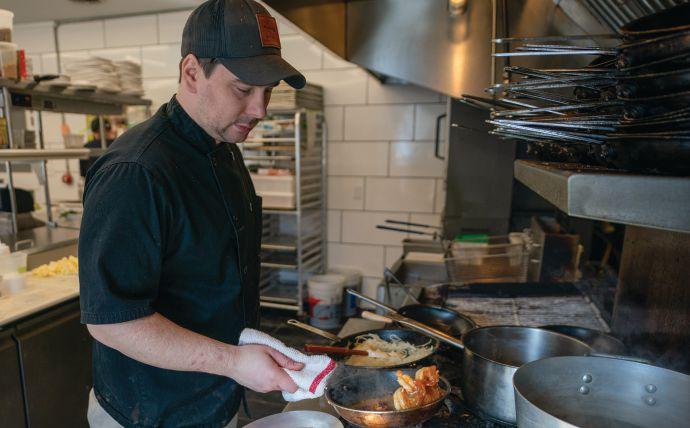

Left and above, Isabelle Hay had help from her father, Robert, in renovating the historic structure. Many original details were retained.
His credentials are also bona fde, as he has worked with the LOLA 41 group of restaurants that began on Nantucket, eventually branching out to Palm Beach and Naples, Florida. He also did a stint in New York at Nomad, the restaurant in the Breslin Hotel.
Now, Wheeler and his staf of two use the freshest local ingredients in creating menus that he said “change four to six times a year, and [we] are constantly adding variations throughout the year.”
Some of Wheeler’s most popular dishes are ofered at both lunch and dinner. For starters, there are roasted beets with whipped goat cheese, pistachio crumble, and balsamic reduction; pork belly lettuce cups with house-cured pork, fresh basil, pickled red onion, and house teriyaki; and the cheddar scallion fritters with aged cheddar and poblano crema.
‘‘ WE MAY BE UPSCALE BUT WE’RE NOT UPTIGHT.”
Asformains,thelomeinstirfry and the pork schnitzel are available both at midday and in the evening. Entrees only available at dinner include steak frites, New England-style halibut, and a half chicken under a brick.
— CO-OWNER AND CHEF AXL WHEELER
Te real surprise comes not just in the innovative food but in the moderate prices, with dinner entrees ranging from $18 to $45.
As Wheeler likes to say, “We may be upscale, but we’re not uptight.”
Because portions tend to be reasonably sized as well as reasonably priced, there’s usually room for dessert. Te doublelayer chocolate cake, pumpkin cheesecake, and apple galette are on
We can, and we did.

When a buyer refused to close the purchase of a large multi-family property and demanded a return of their sizable earnest money deposit, our client turned to us. Leveraging our air-tight contract and aggressive litigation approach, we took the dispute to court — and won decisively. Our client was awarded the buyer’s deposit, as well as their attorney’s fees. As they later said, “I would recommend this remarkable frm in a heartbeat.”
Let RCSM’s compelling work protect your interests.


the lunch and dinner menus.
A special Sunday brunch menu might feature dishes such as a pork belly Benedict and brie and bacon grilled cheese on sourdough bread.
If Wheeler wants his patrons to leave with a somewhat full wallet (thus the moderate pricing), he doesn’t want them to leave with an overly stufed belly.
“I don’t want my food to be super rich or overflling,” he said.
Tus, he makes his teriyaki with enough citrus to balance out the sugar content and makes sure the sherry vinegar in the mushroom gravy is satisfyingly rich but not cloying.
When it comes to cocktails, Hay urges guests to sample the restaurant’s signature Limewater, a mixture of Castle & Key gin, fresh lime juice, simple syrup, and aquafaba, a vegan substitute for egg whites, which give it a nice foamy texture.
Te cocktail can be enjoyed in the cozy bar in cooler weather or on the porch with its view of the Kentucky River when temperatures rise.
Left and below, Hay is a certifed sommelier and is working to become a bourbon steward.


Above left, Limewater has a small but select wine list yet Hay says bourbon is a more popular choice. Above, Wheeler serves an order of shrimp and stone-cut grits.
As a National Historic Landmark of Kentucky, Glen Willis’ past is secure. Te future of Limewater Bistro + Bar is yetto be decided, but it appears bright in the hands of capable stewards Hay and Wheeler.
Continuing to provide fresh farm-to-table cuisine at afordable prices and furthering their relationship with the community are priorities, but the couple has other plans as well.
Wheeler wants to grow his catering business with more weddings






and private parties. With three second-foor rooms capable of seating up to 50 people for dinner and hosting 70 for cocktails, he seems primed to do so.
Hay, in addition to implementing continuing education for her staf on topics ranging from food knowledge to wine and bourbon appreciation, has other ambitious plans as well.
“Frankfort has a lot of talented artists and musicians, and I would like to showcase not only our food but their talents at gallery evenings and musical events at Limewater,” she said.
Henry Harrison Murray, Kentucky’s merchant prince and former Glen Willis owner, who loved nothing more than an entertaining soiree, would surely approve. KM

Hay, Wheeler, and their 1-year-old daughter, Emerine, enjoy some family time.






Combined purse money paid out in 2023 (Association and KTDF) hit another ALL-TIME HIGH of $196,644,325

of them—
Of the 14 tracks that averaged more than $500,000 in daily purses in 2023, four of them Keeneland, Kentucky Downs, Churchill Downs, and Ellis Park—are in Kentucky!*
Over $200 million has been distributed to Kentucky breeders since 2006. With purse money soaring, the KBIF contributing $16.2 million to eligible breeders, the fullest fields in the country (average field size of 8.8, higher than New York, Florida, and California), and quality racing year-round at our five racetracks, there is no better time to race and breed in the Bluegrass
Race and Breed in KentucKY







































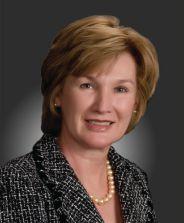
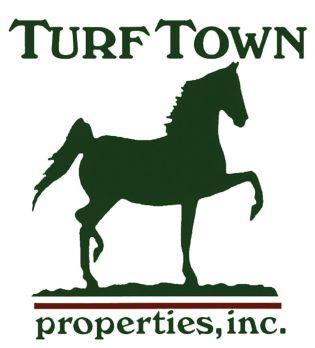








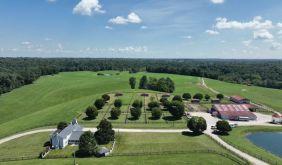


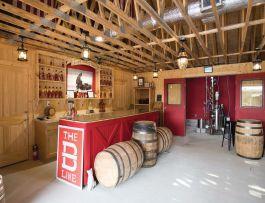








The Marksbury Family Branch of the Lexington Public Library turns the page to innovation and dazzling design as it replaces the former Village Branch facility
By William Bowden Photos by Joseph Rey AuTTe bold, modernistic design of the new Marksbury Family Branch of the Lexington Public Library is the frst clue that something diferent is going on here. Indeed, the innovative features and programs found in this reimagined library refect a creative approach to better serving the educational and civic needs of the surrounding Cardinal Valley neighborhood.
Visitors experience this the moment they enter and encounter a large multipurpose community room that seats 150 and is suitable for neighborhood meetings, job fairs, and other large-scale events. Te 30,000 square feet of total space inside the Marksbury — nearly triple the amount of the former Village Branch it replaces — makes such spacious rooms possible.
“We never had enough meeting room in the old Village Branch,” said Meghan Talley, who chairs the Cardinal Valley Neighborhood Association and is a frequent library visitor along with her 3-year-old daughter, Annalise. “With its size, the Marksbury will be perfect for neighborhood gatherings and events. Tat’s one of the top things we’re excited about. And it’s a beautiful building.”

A sense of spaciousness continues throughout the two-story structure with its generous assortment of meeting and study rooms, a large multipurpose classroom, a dedicated teen area with video gaming, more stacks for books and periodicals, and
a greatly expanded children’s activity area.
Located at 2185 Versailles Road, the Marksbury Family Branch was scheduled to open in mid-March and is named afer the Marksbury Family Foundation, which provided a generous lead gif toward







creation of the new $17.4 million branch. Te Lexington Public Library estimates 1 million customers will use the facility annually. Its greatly expanded size and features make it not only a place to fnd a good book but also a true community hub.
“Tis is a transformational project for the Cardinal Valley neighborhood to have something of that scale,” said Heather Dieffenbach, executive director of Lexington Public Library. “It’s a resource we have not seen before on that level.”
Te unusual, eye-catching exterior design of the Marksbury has a purpose specifcally related to the role of a library, according to Rick Ekhof, design principal for the project and co-founder of EOP Architects in Lexington.
“As you drive by, you may ask yourself, ‘What is that?’ Tat’s one way of saying what a library is for, how knowledge
is gained by asking questions. Tat was an inspiration to us as we designed the Marksbury. It’s an aesthetic as a form of sparking curiosity.”
Te interior design refects a specifc objective the LPL had in mind. Group 4 Architecture, a San Francisco frm that specializes in library design, partnered with EOP to create a sense of openness throughout
the building. Extensive glass walls on three sides let the outside world in, a symbol of the welcoming attitude the library exudes.
“Te community wanted a place with a lot of natural light to be in touch with the outdoors,” said Anne Donworth, Lexington Public Library’s director of development, marketing, and communication. “Te residents did not have a lot of beautiful public space, and that’s one need the Marksbury addresses.”
Te connection with the outside is accented by a two-story atrium running down the center, topped by a skylight. Tis multifunctional space, which acts as a central lobby, is located just of the main entrance and is named the James and Martha Brown Charitable Foundation Paseo afer its sponsor. It’s an ideal setting for community gatherings, presentations, art fairs, and more. Here, quick-use computers (15 minutes or less) and new book releases can be found. Te entire library focuses around this prominent atrium.
Te theme of spaciousness is underlined on the frst foor by an expansive meeting room with a temporary wall that allows it to be divided into two rooms. Tis is envisioned as ideal for community events of all varieties. Te nearby Keeneland Room with seating for 16 is appropriate for smaller meetings with a focused theme.

Tere is also a large multipurpose classroom on this level with a plethora of functions that include classes in GED preparation and English for Speakers of Other Languages. Other features located here are virtual reality-based vocational training (electrical, plumbing) and Makerspace for hands-on projects such as 3D and T-shirt printing.
A sweeping extra-wide staircase takes visitors to the second foor, a more traditional library space with stacks holding books for children, youth,


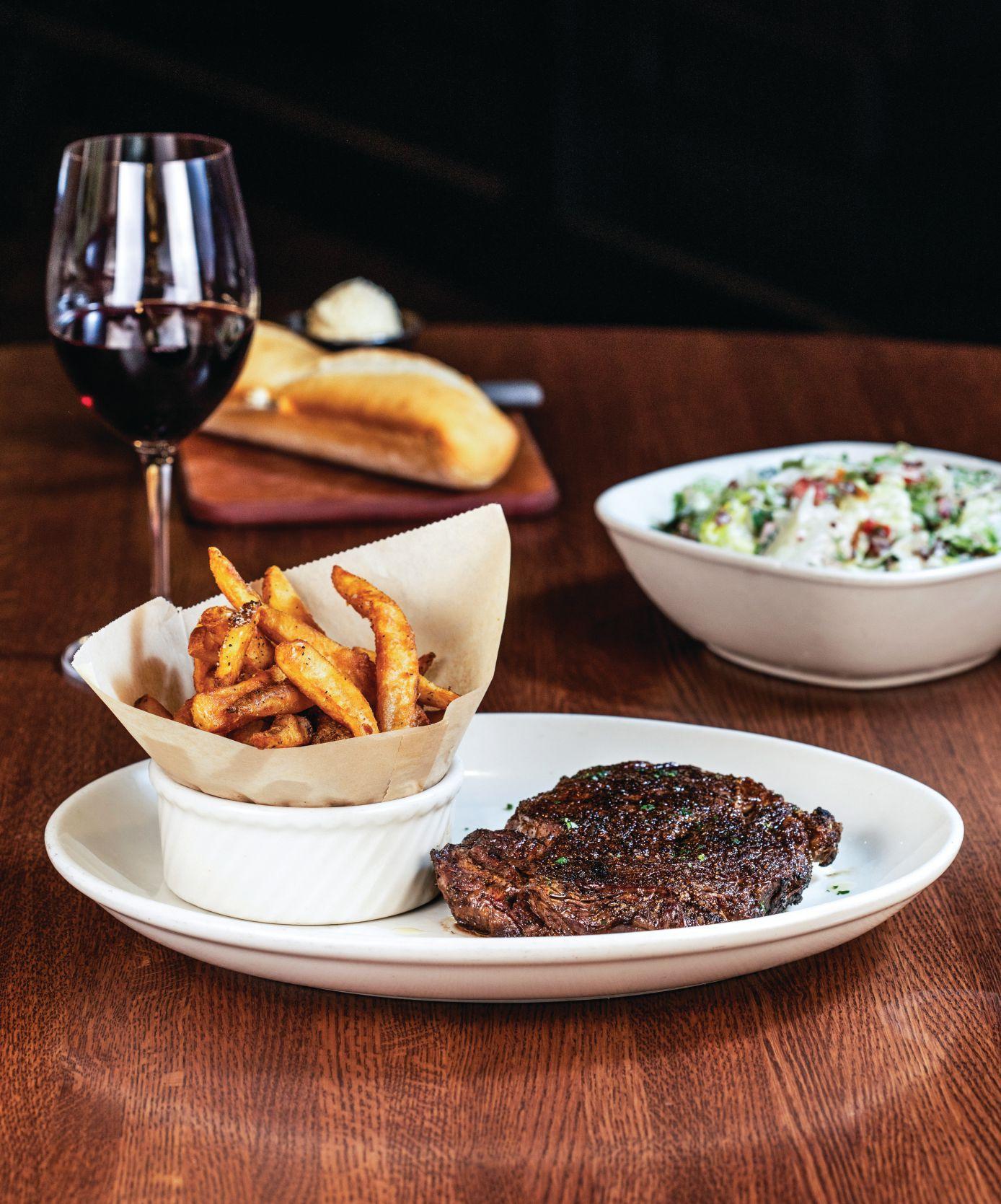


and adults, as well as six small-group study rooms. Approximately 55,000 volumes will make up the initial inventory.
Tis area also includes the expansive Tempur-Sealy Children’s Discovery Zone, which is home to puppet theater, games, children’s computers, and a storytime area. Tere is a quiet room for caregivers and their charges, a frst for the Lexington Public Library system.
A dominant feature of the Marksbury’s design is a prominent front projection coming out from the second level toward Versailles Road that has an interior space dubbed “Te Teen Porch.” Tis is where teen books, computers, and video games are located. Enclosed on three sides by the walls of the projection, it gives teens a sense of their own special place apart from the general library fow.
Te outside amphitheater just in front — a frst for the Lexington Public Library system — takes advantage of the mild slope of the site. It’s ideal for library programming and
‘‘
IT’S A RESOURCE WE HAVE NOT SEEN BEFORE ON THAT LEVEL.”
— EXECUTIVE DIRECTOR HEATHER DIEFFENBACH
special events, or just relaxing and reading.
A special feature of the Marksbury, and another frst for the Lexington Public Library, is afer-hours access, primarily intended for organizations such as neighborhood associations or book clubs. Tere is also a drivethrough window where customers can pick up and return borrowed material.
Te new Marksbury Branch had its origins in a 2018 Lexington Public Library master plan that was created based on focus groups and polls at each branch. It pinpointed the former Village Branch as the location most in need of revitalization. Opened in 2004 and living in a strip mall as the system’s only leased location, it was always intended to be a temporary installation.
In spite of those humble beginnings as a kind of storefront library, the Village Branch was always a lively place and a pioneer in certain ways. Tat included an afer-school program for homework assistance that will continue in the Marksbury as Lexington Public Library Afer School.
“We always used the Village Branch as a location that was moving the library forward in terms of customer service and community engagement,” Diefenbach said.
Tat has included paying attention to the special needs of its surrounding neighborhood as a diverse community with



NOW AVAILABLE FOR PURCHASE AT
Come Meet the Author at his spring book signing outside of The Keeneland Shop on April 13, 2024 between 11AM to 5PM.

“I love a great love story and I’ve found one here. False Riches is about people who love horses and deal with the trials and tribulations of the horse racing world. Stupendous.”
— Chris McCarron
Two Time Winner of the Kentucky Derby and Hall of Fame Jockey




“John Paul Miller has written a timely novel on the intricacies of horse racing and the issues facing it today. His characters are part of the fabric of racetrack life and will take you on a surprising journey.”
Helen Alexander






Hispanic, immigrant, and refugee populations, among others. A social services aspect that was pioneered at the Village Branch continues with the Marksbury. Examples are partnerships with such organizations as God’s Pantry Food Bank, Goodwill, and Te Nathaniel Mission, a multipurpose support organization for marginalized citizens.
Te Village Branch was the library system’s frst bilingual location, with staf and collections refecting both English and Spanish languages, a tradition that continues in the Marksbury. Tat’s because this area of Lexington has evolved to include an especially strong Hispanic population.
José Nino, a native of Mexico who arrived in Lexington with his mother in 2001, lived in Cardinal Valley during his childhood and early teenage years. He took advantage of the homework help program then in place and remembers the welcoming atmosphere he found at the Village Branch.

“Te library was both a place to get my homework done and also a comfortable place to be with others,” Nino said. “Tere were so many arts-and-crafs programs. I remember a photography class taught by someone from Bluegrass Community and Technical College where we would go around the neighborhood taking pictures and learn about nature. We all got a digital camera to keep.”
Nino credits the library with prompting him to further his education by earning a bachelor’s degree from the University of Kentucky in business management and
marketing afer graduating from Bryan Station High School. He now works at Goodwill Industries of Kentucky as the Sales Force administrator.
Nino was a witness to some of the conceptual planning of the Marksbury Branch and recalls how impressed he was with the proposals. “I was blown away by the level of detail coming from the architects to represent the community in the best way.”
Donworth said both EOP and Group 4
paid close attention to what the neighborhood wanted. “Te Hispanic portion of the Cardinal Valley community wanted a lively place with a lot of natural light and more vibrant colors, more artwork, than in some of the other branches,” she said. “You can see those features throughout the building’s interior.”
In both scope and design, the Marksbury truly represents a giant leap forward for the Cardinal Valley neighborhood it serves. Overall, it ofers residents quality public space they have not had previously. “We’re giving them what the rest of the city already has access to in many ways,” Diefenbach said.
A bonus of the Marksbury’s eye-catching architecture is the way it provides an excellent impression upon the many visitors coming into Lexington on Versailles Road from Blue Grass Airport.
“Tis is the corridor that welcomes so many people into Lexington,” Diefenbach said. “Tey leave the airport and see the lovely horse farms on the way in, and now this big, beautiful library. I think that says wonderfulthingsaboutourcommunity.”
Tere is an aspect of the Marksbury’s location that is a natural connection to Lexington’s Toroughbred industry. Te library is just a few miles down Versailles Road from Keeneland Race Course, where some members of families living in the library’s surrounding neighborhood have found employment as grooms, hot walkers, stable hands, and other occupations.
In addition, many members of those same families are employed on some of the horse farms in Fayette and nearby counties. Taken together, these track and farm workers are the backbone of an industry that provides vital support for the Central Kentucky economy.
All of that holds special signifcance for Mary Wis Haggin, a board member of the Lexington Public Library Foundation, which mounted a capital campaign to raise $5 million toward the Marksbury’s creation. Te ties that she and her husband, Ben Haggin, have with the heritage of the Toroughbred industry and Keeneland in particular are impeccable. Tey include Ben’s great-grandfather,
‘‘ THESE FAMILIES ARE WORKING HARD TO BUILD A BETTER FUTURE FOR THEIR CHILDREN, AND THE MARKSBURY BRANCH IS HERE TO HELP.”
— DEVELOPMENT DIRECTOR ANNE DONWORTH
As a team, we have 92 years of experience in all aspects of the Thoroughbred industry, including farm management and development. Involved in the purchase of over 30,000+ acres of horse land, more than half was never listed on the market. We’d love to work with you to find your equine nursery.
We have sold all our farm listings, but we’re aware of horse farms that aren’t listed but can be purchased.


Hal Price Headley, who helped form the Keeneland Association in 1935 and served as its frst president, and his grandfather, Louis Lee Haggin II, a former president of Keeneland. Today, Ben is a member of the Keeneland Advisory Board of Directors.
“I feel like Keeneland, its roots, and its mission, are to support Lexington and the Central Kentucky community,” said Mary Wis Haggin, a member at McBrayer law frm in Lexington. She noted that Keeneland’s $100,000 donation toward the capital campaign acknowledges that connection to this part of Lexington.
“Te Marksbury Family Branch will positively impact a neighborhood where many

Joe Riddell 859-221-0826, horseland1@aol.com
Ryan Smith 859-553-5031, ryansmith@rhr.com

Rich Decker 859-221-3453, richldecker@rhr.com
www.RiddellSmithGroup.com

horse industry workers and their families live,” said Keeneland President and CEO Shannon Arvin when announcing the gif last spring. “Our support of the Lexington Public Library Foundation continues Keeneland’s founding mission to enhance the quality of life in our community.”
Haggin’s involvement with the foundation andlibraryarenatural,givenherbackground.
“Being from Russellville, a small town in Western Kentucky, I found the library to be the center of information for me growing up there,” she said. “My father was chairman of the city’s library board, so supporting the Marksbury is personal with me.”
With all of the Marksbury’s engaging, innovative programs and design elements, there remains to be considered the overall purpose of a library.
“Information literacy is the basic idea, for people to get the education they need
to be able to move forward,” Donworth said. As one example of this mission, she cited the families of Toroughbred industry workers living in the neighborhoods
the Marksbury primarily serves. “Tese families are working hard to build a better future for their children, and the Marksbury Branch is here to help.”
Talley, the neighborhood association chair, works as program director at Te Nathaniel Mission. She is getting her daughter, Annalise, started on that literacy journey by bringing her to the library as ofen as possible. Annalise already has a favorite reason for coming to the library: “to get Elsa books,” she said, referring to the heroine of the Disney animated movie “Frozen.”
Nino, on the other hand, is a fully realized example of how the library can help people reach their goals. His is a story any librarian would love to hear.
“I’m a frst-generation high school and college graduate in my family,” Nino said. “But the infuence the library had on me was much more than just getting good grades and graduating. Te staf, the high school and college student volunteers working there all encouraged me to strive for more. One way or another, everything centered on education and what you can grow up to be.” KM



Bet from your phone with Keeneland Select. Earn a special $100 back after you wager $200 on Keeneland racing. Wager a total of $300 in the first 30 days, and earn another $100 back with the standard sign-up bonus! Use code SPRING2024 at KeenelandSelect.com or on the app.
*Other exclusions apply. Visit keenelandselect.com for details.















